- info@naturebylennart.com

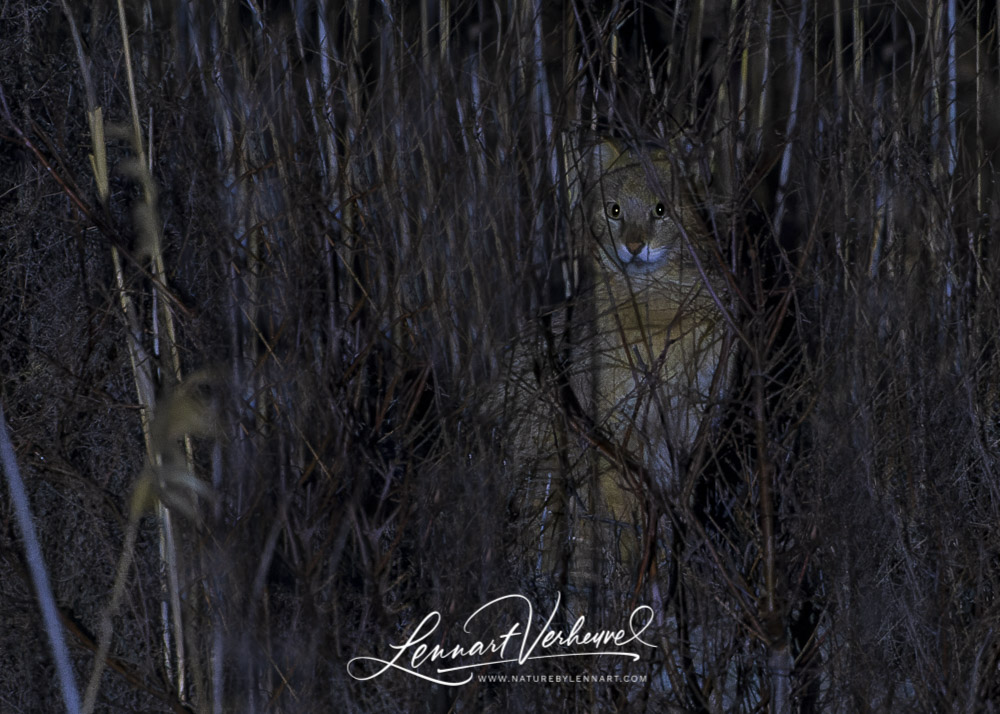
In the spring of 2022 I suddenly find myself in Azerbaijan. The reason for this is this time not a special cat, but a special bird! The Siberian Crane is an endangered bird of which only a few thousand remain in the wild. In the eastern part of Asia that is. As far as we know, there is only one left in the western part of Asia and of course this bird has been given a name by now: Omid. That name was given to him in Iran, where it has been wintering in the same rice field for years. Equally dutifully, the bird takes off every year to fly back to Russia to its breeding grounds, only to fly back again in the autumn without any breeding succes. There won’t be a partner for Omid. Among bird watchers, there is an avid group that likes to see as many bird species as possible within the Western Palearctic (WP) ecozone. The chances of seeing a wild Siberian Crane within this area after Omid are virtually nil. However, Iran is not considered to be in this ecozone, which means that it is not possible to easily ‘tick’ the bird in its wintering areas. Therefore a small group of fanatic WP birders made an attempt to pick up the bird on its way to Russia when it passed through neighboring Azerbaijan. This was in 2020. A bird seen in Azerbaijan does count for the list! And they saw Omid! In 2021 there was a number of bird watchers that wanted to repeat their success, but corona prevented a trip to Azerbaijan. 2022 was the year it had to happen. I happened to be able to go and it seemed like a nice enough trip in any case so I landed in Baku on February 25, 2022.
While I often have to travel by myself I was certainly not alone this time. About fifty birdwatchers from all kinds of European countries flocked to Azerbaijan, all hoping to see that that one special bird. The Netherlands is well represented and I am part of a group of seven. We have rented two large SUVs in which we move. Much of our activity centers on Shirvan National Park. This is the spot where Omid was seen in 2020. When we can finally see this location for ourselves we lose our courage a bit because the reed bed where Omid was found is large and it’s impossible to check it out properly. However we don’t lose faith.
There is more to see in this park besides Omid in any case. The reed beds are full of birds, some of which are quite special for a Dutch birder. Bearded Reedling is not a rare bird in the Netherlands but they remain very attractive birds.
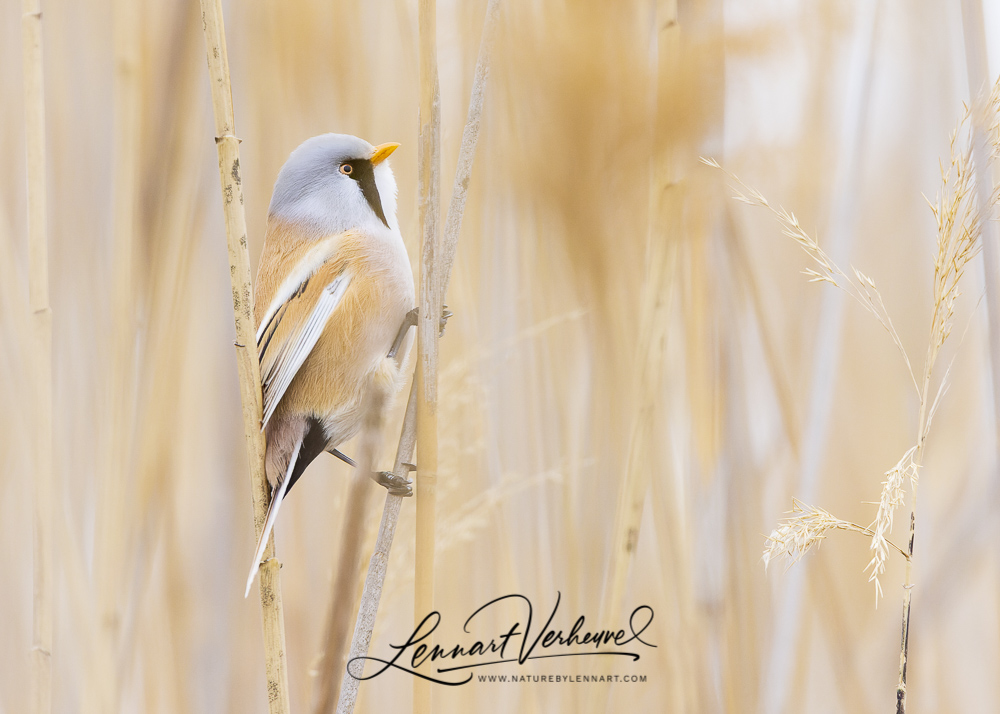
Bearded Reedling
However, an abundance of Penduline Tits is a pleasant change from what we are used to. I can never get enough of this beautiful songbird!
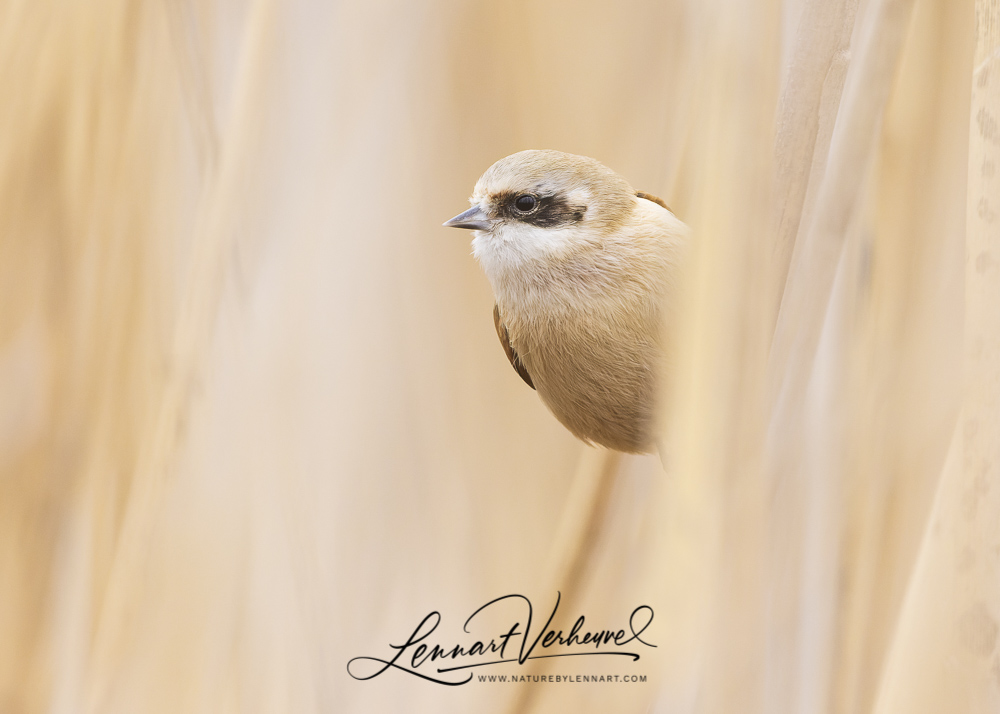
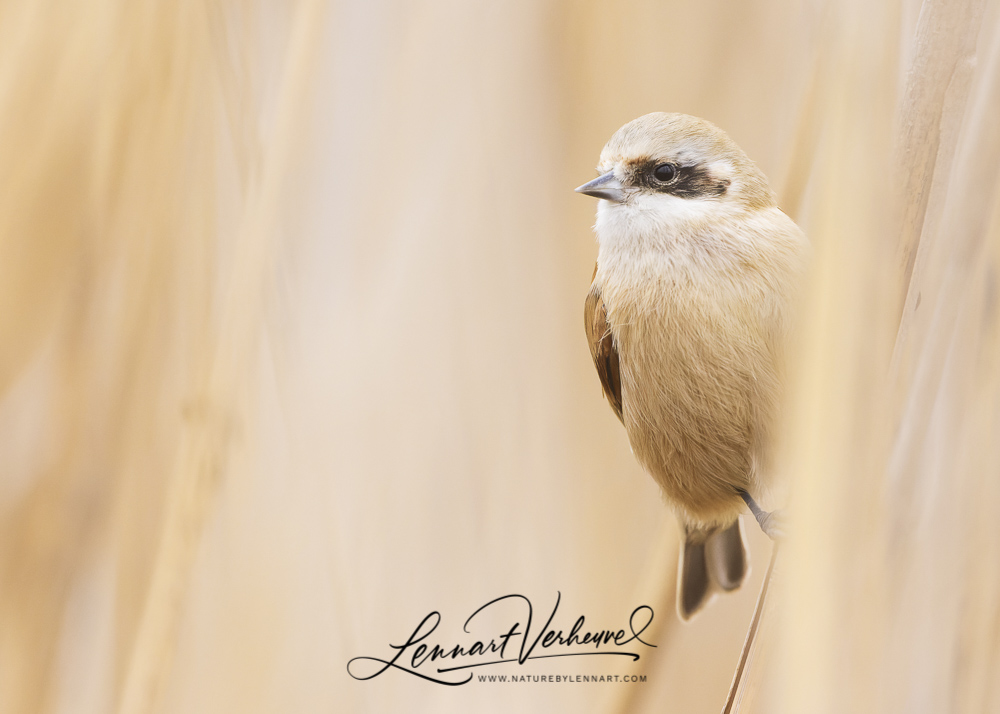
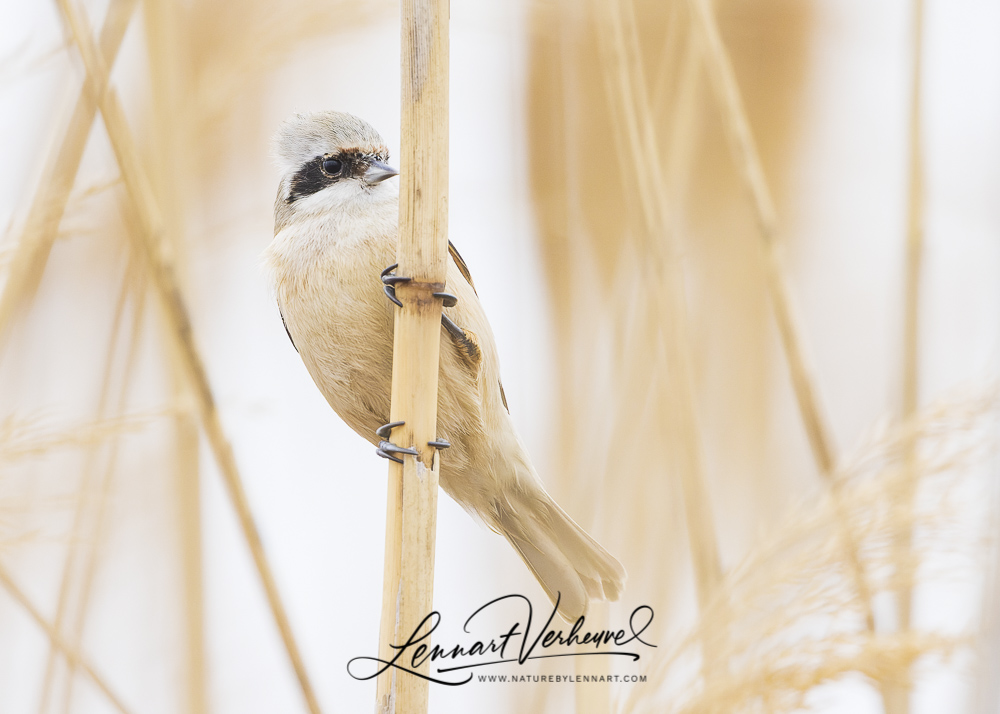
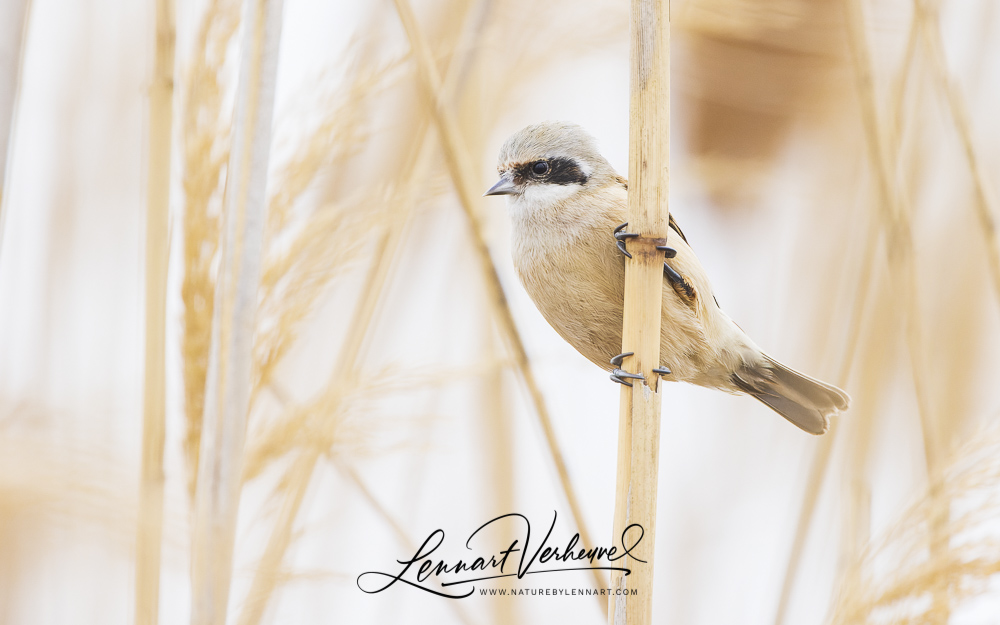
Penduline Tit
The reeds also contain special Common Reed Buntings of the caspia subspecies. They are remarkably light colored and have thick parrotlike beaks.
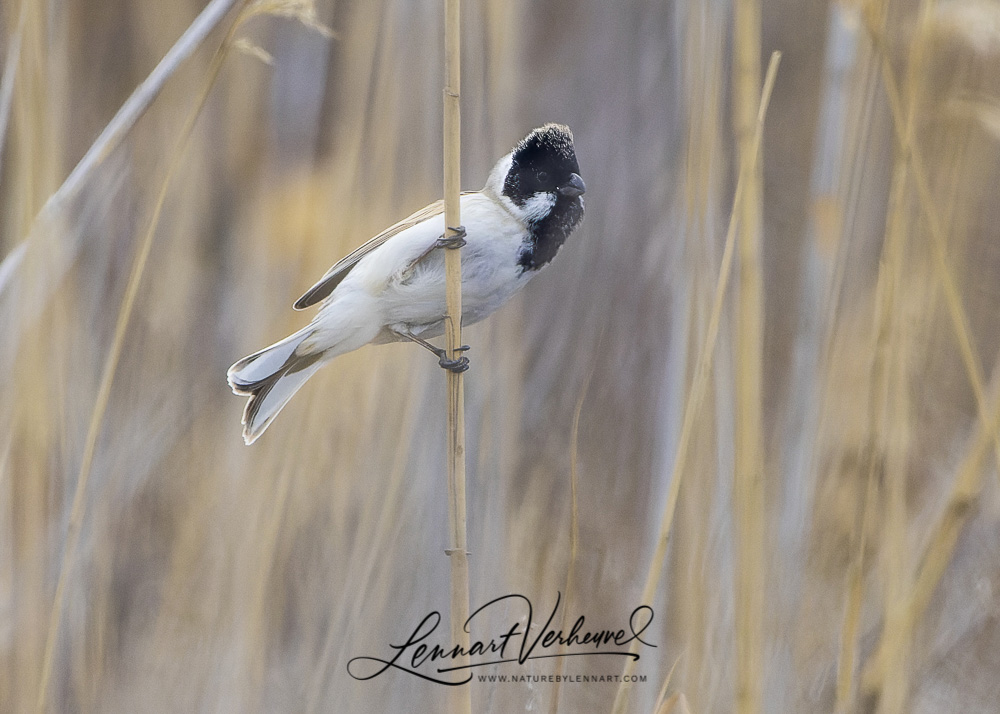
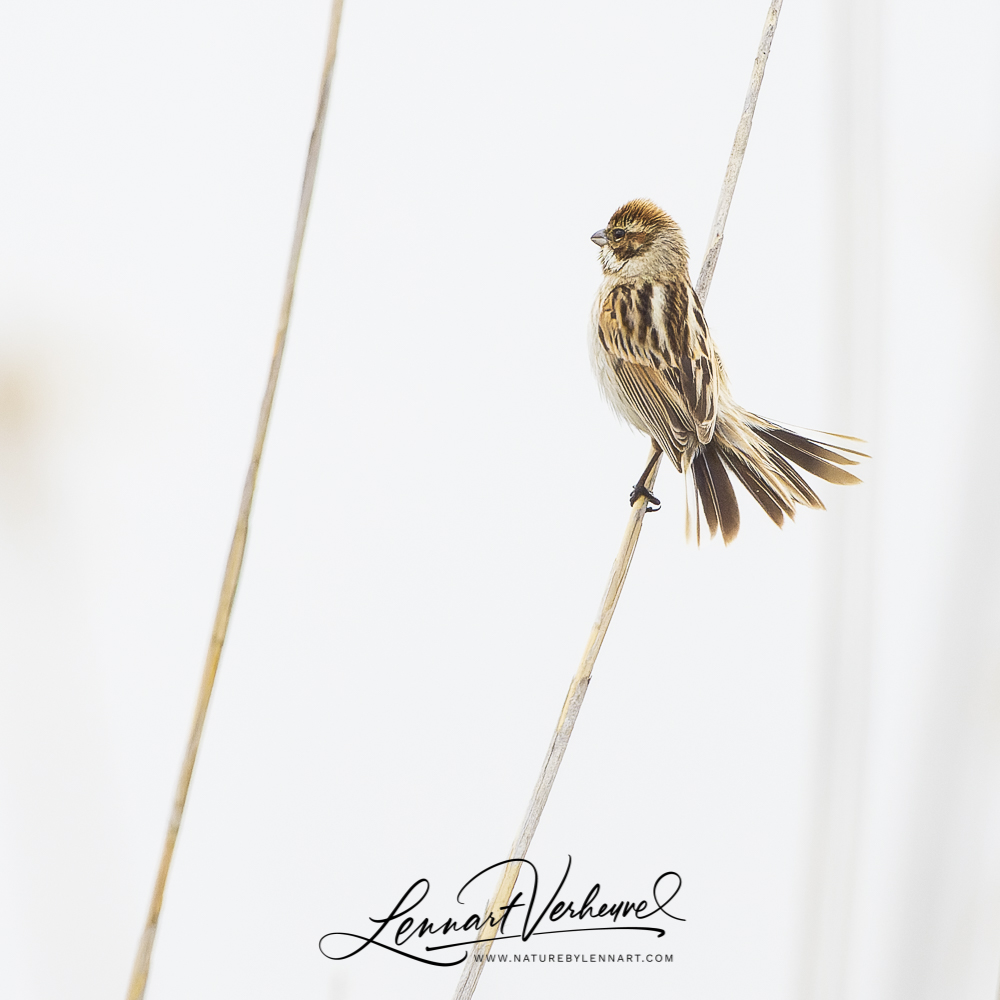
Common Reed Bunting ssp caspia
At the outer edge of the reed we find a female Daurian Shrike.
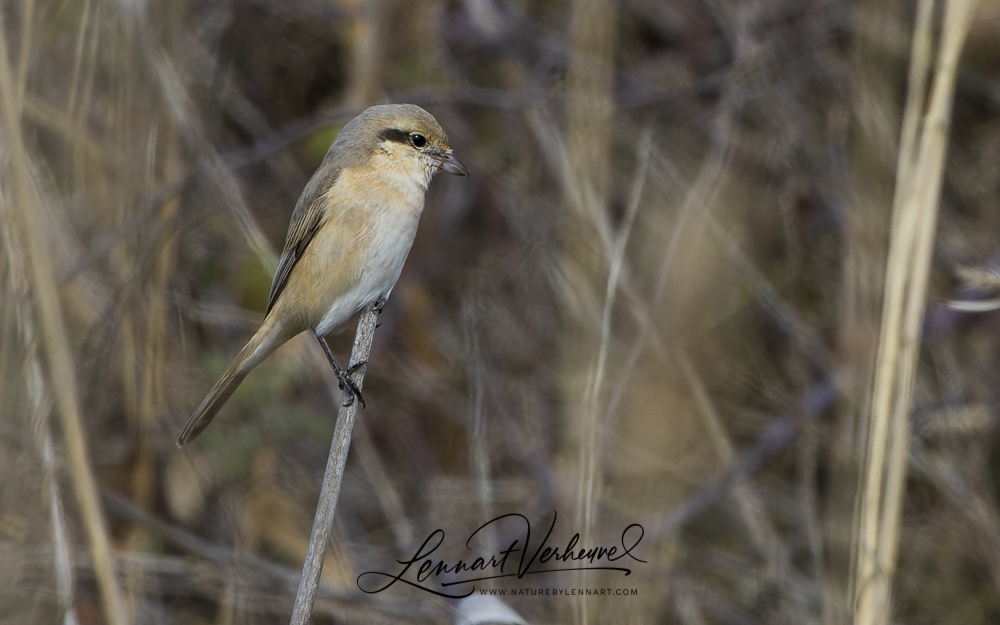
Daurian Shrike
In addition, there are large mixed groups of Corn Bunting and Spanish Sparrow.
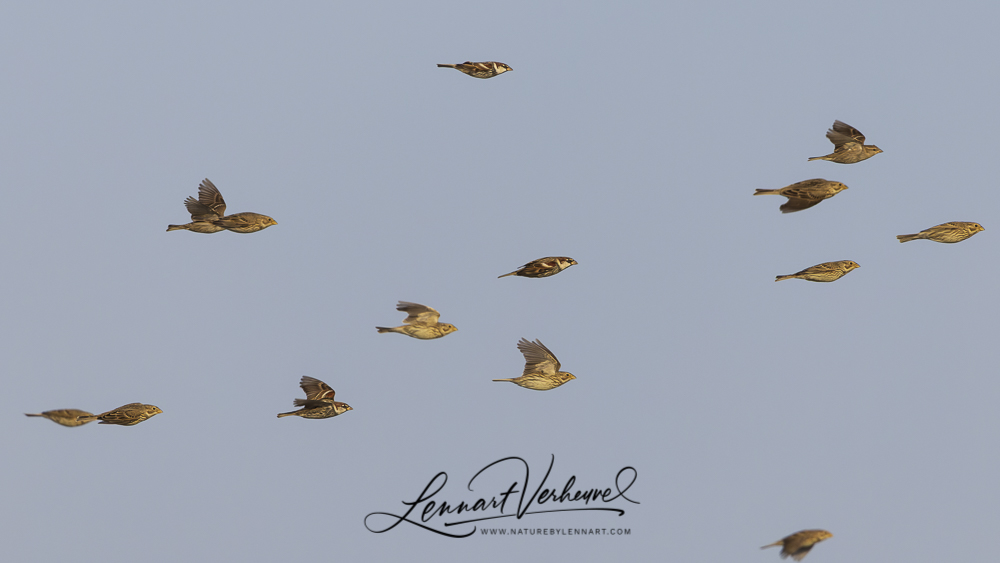
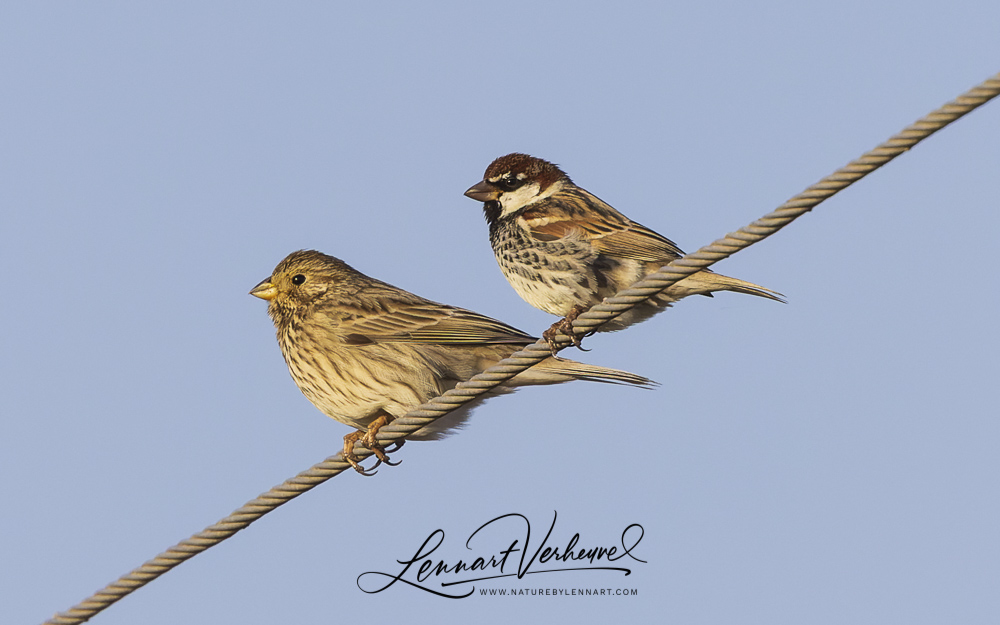
Corn Bunting and Spanish Sparrow
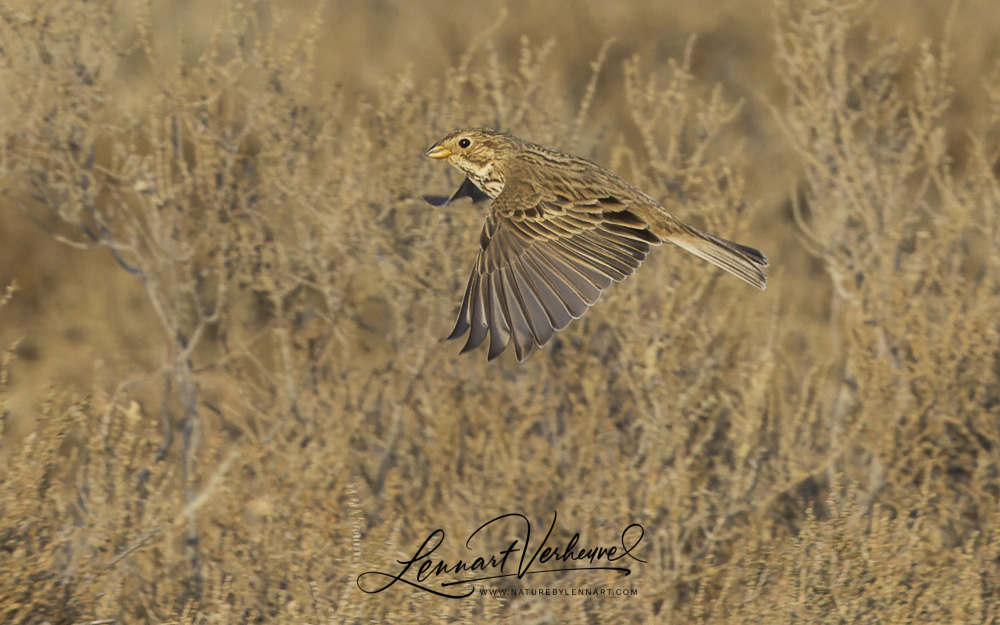
Corn Bunting
With some effort we also find groups of Heines Short-toed Larks.
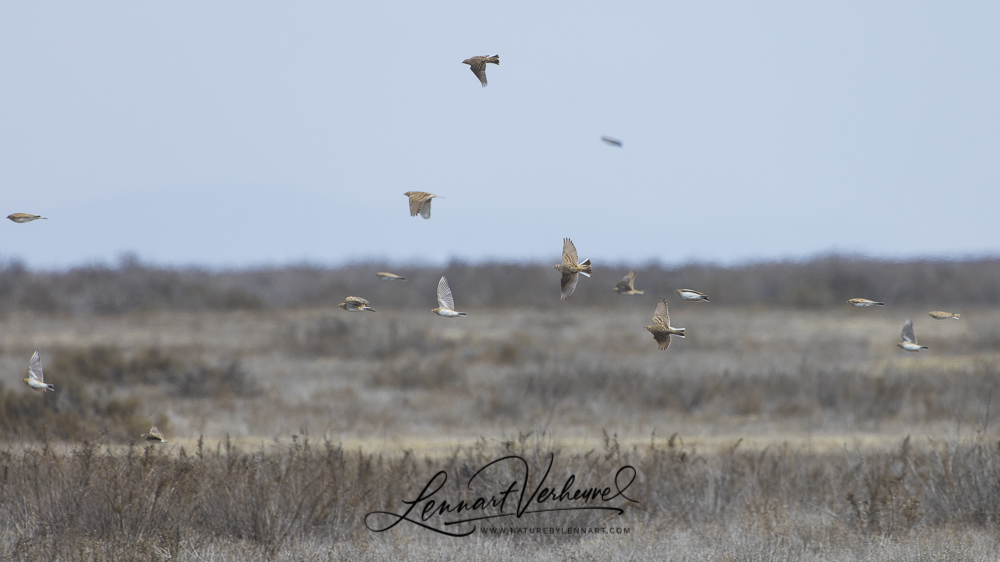
Heines Short-toed Lark
Crested Larks are a very common sight.
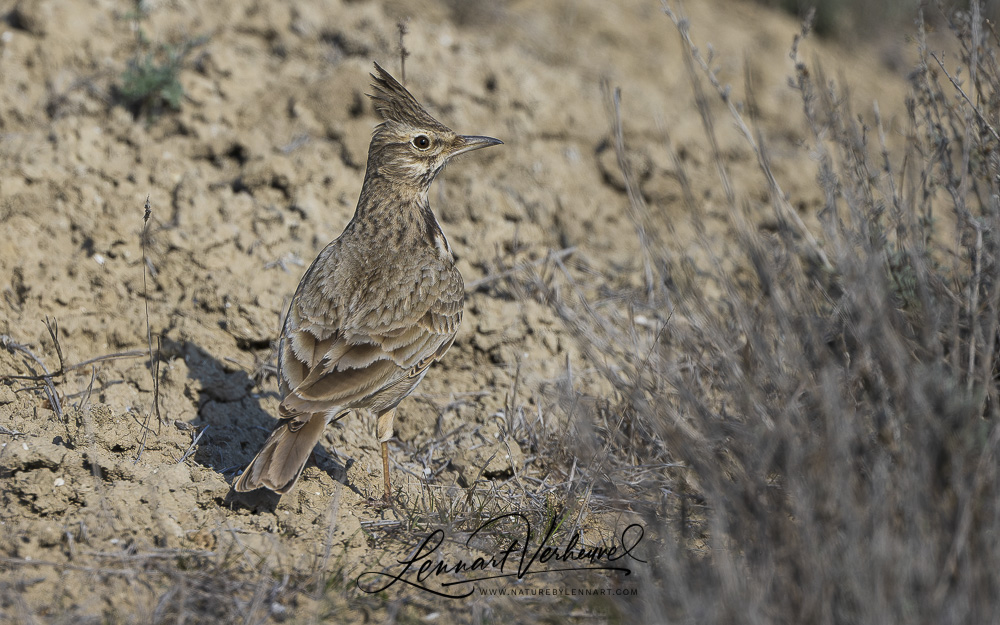
Crested Lark
When we drive crisscross through the large park we also come across a number of courting Calandra Larks. We are very happy to see them. We pretty much never get to see them in the Netherlands and what beautiful larks they are!
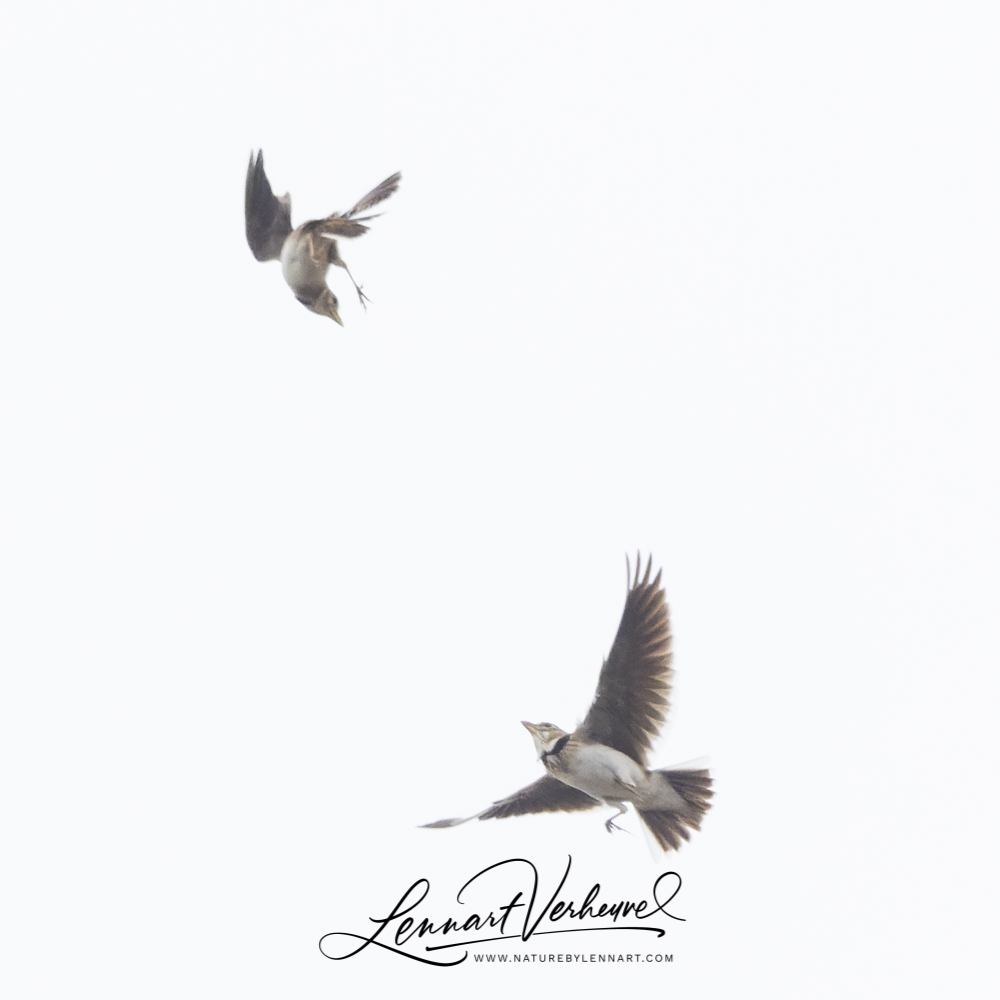
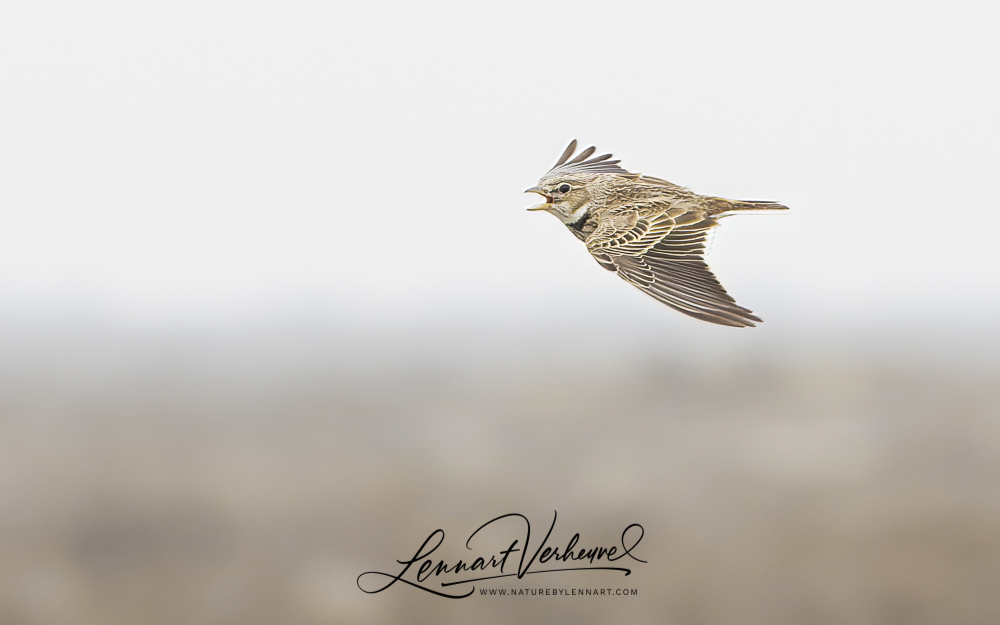
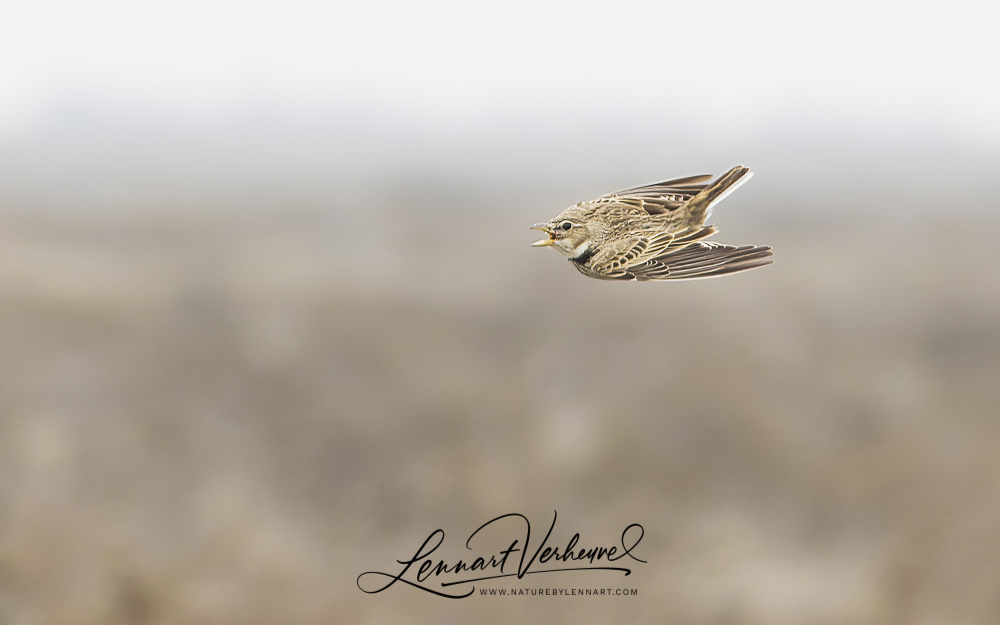
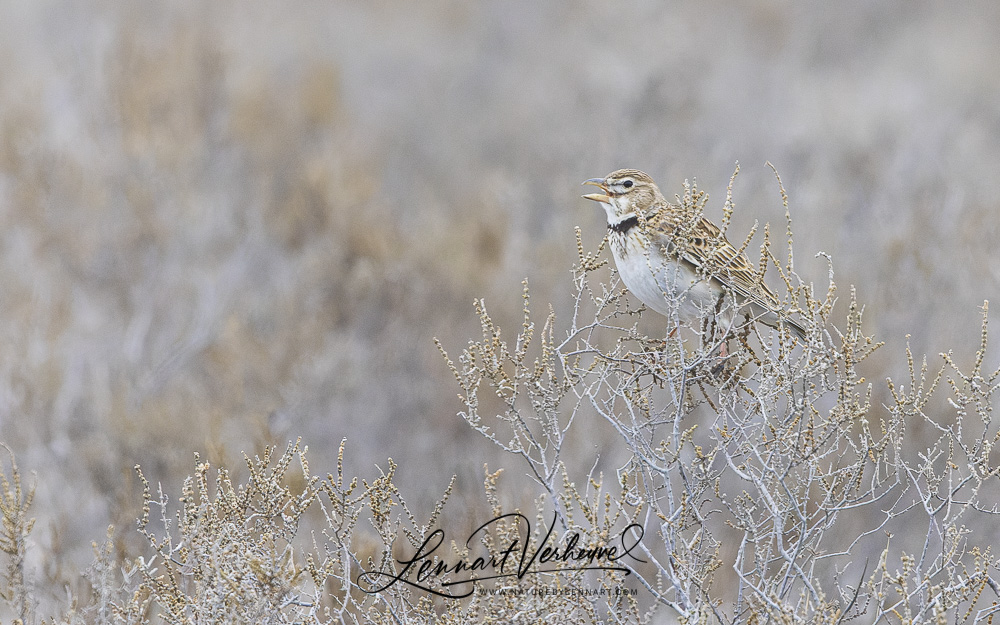
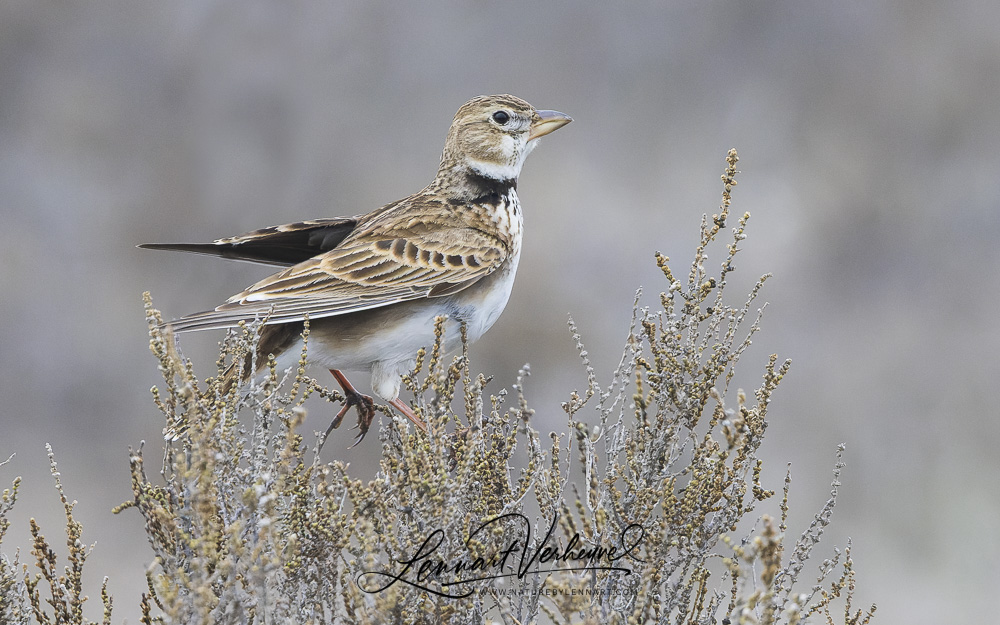
Calandra Lark
Every now and then a beautiful male Hen Harrier crosses the fields and chases all the small birds up in the air.
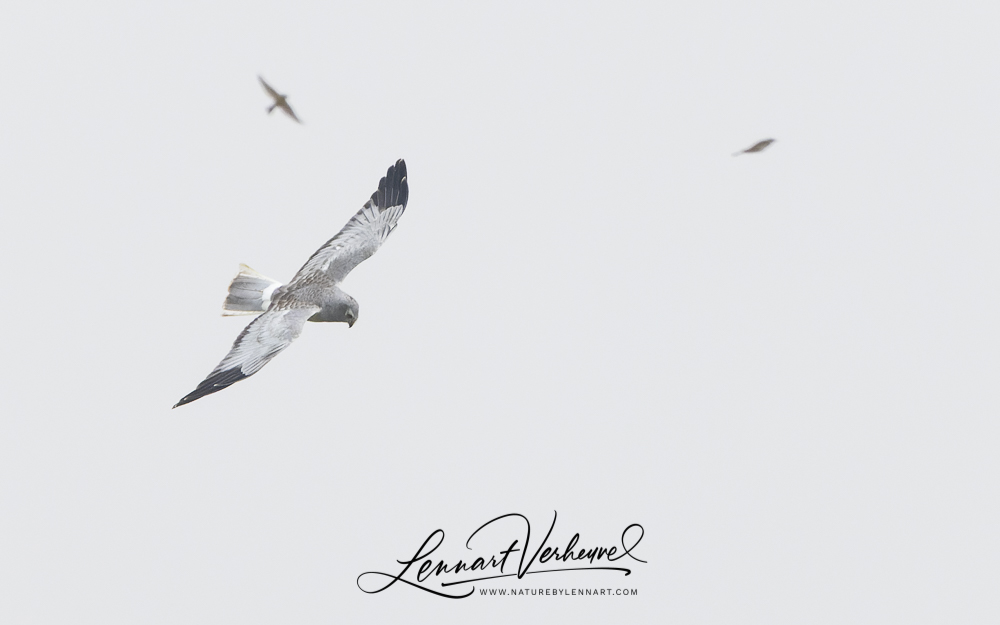
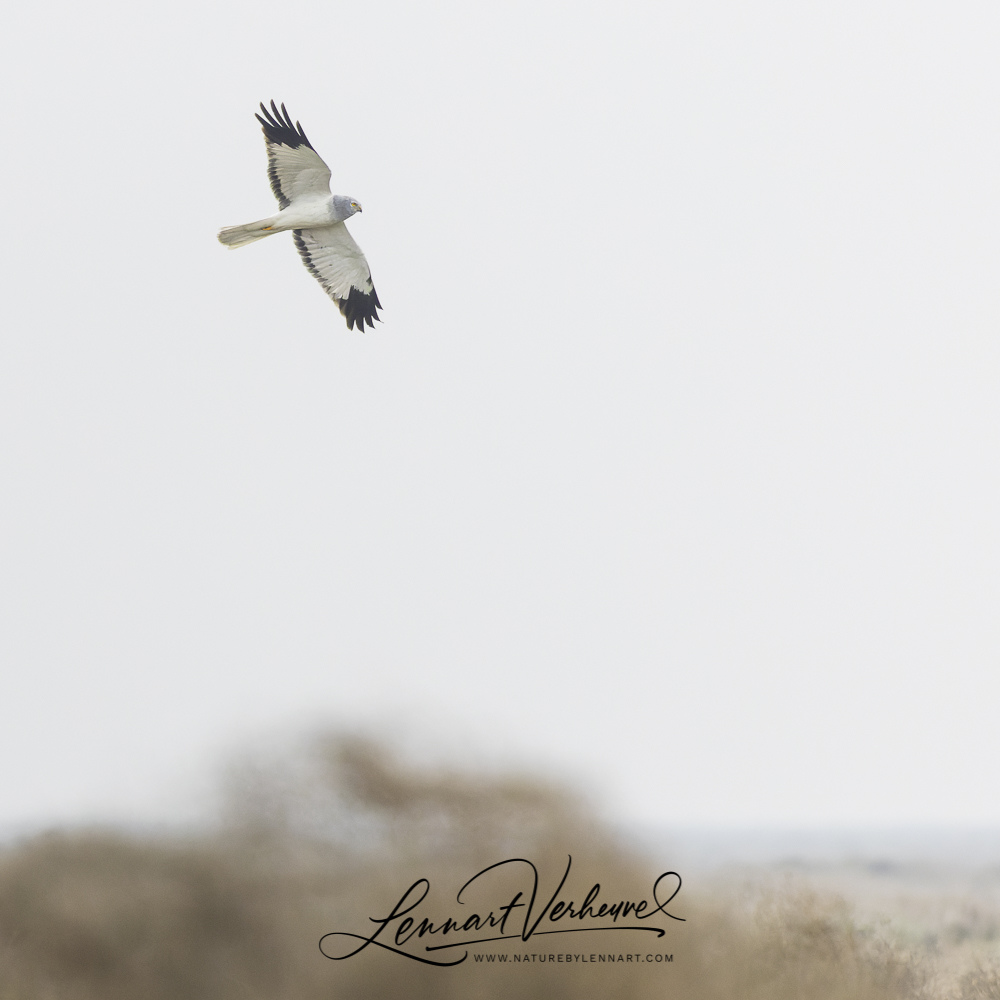
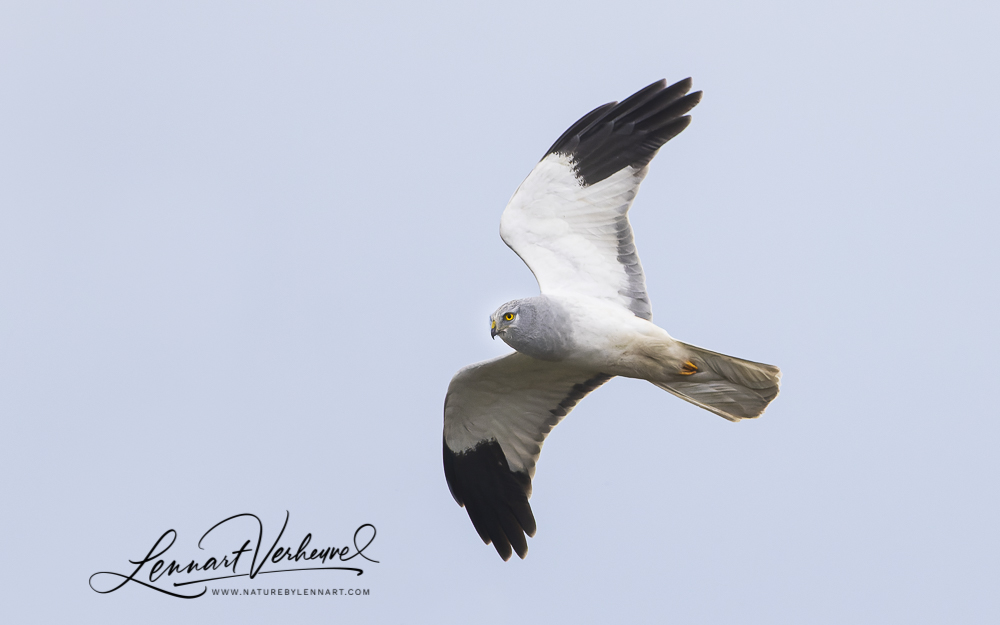
Hen Harrier
On our first day in Shirvan, while strolling along the reed, we also encounter a Golden Jackal that is looking at us from a short distance. That’s a cool new mammal!
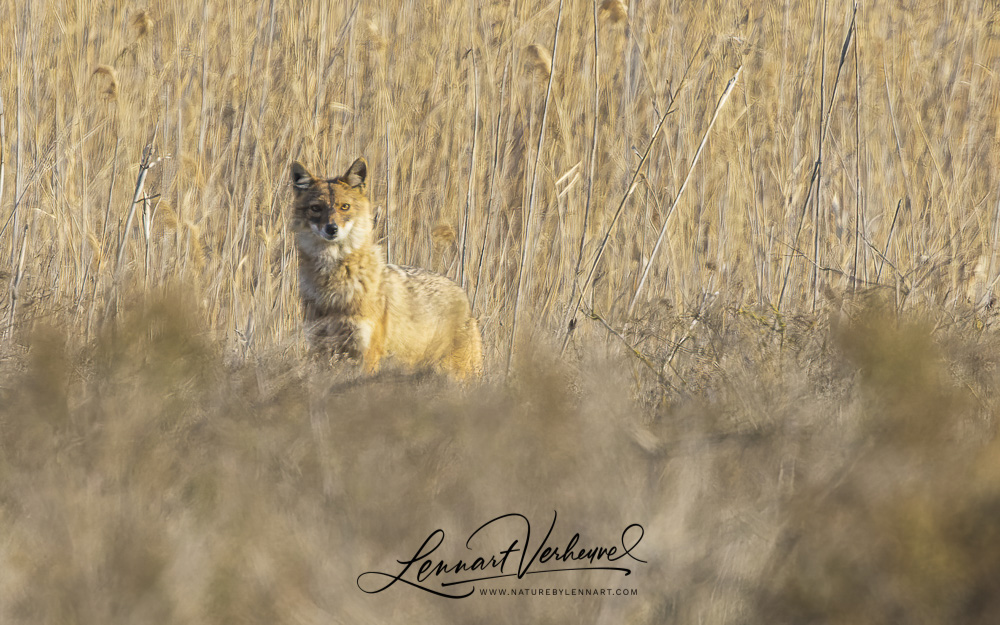
Golden Jackal
The Red Foxes here are of the caucasia subspecies and are more grey than our Red Fox. They are certainly very beautiful!
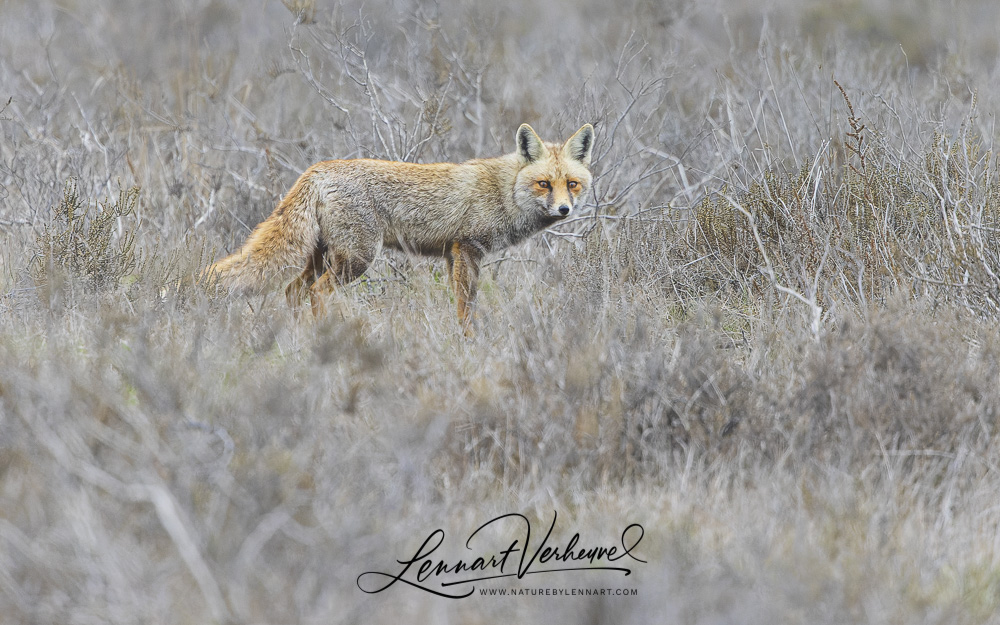
Red Fox ssp caucasia
A real specialty of Shirvan are the Goitered Gazelles. This beautiful gazelle is vulnerable to extinction and Shirvan is home to some large groups. Some animals show themselves very well.
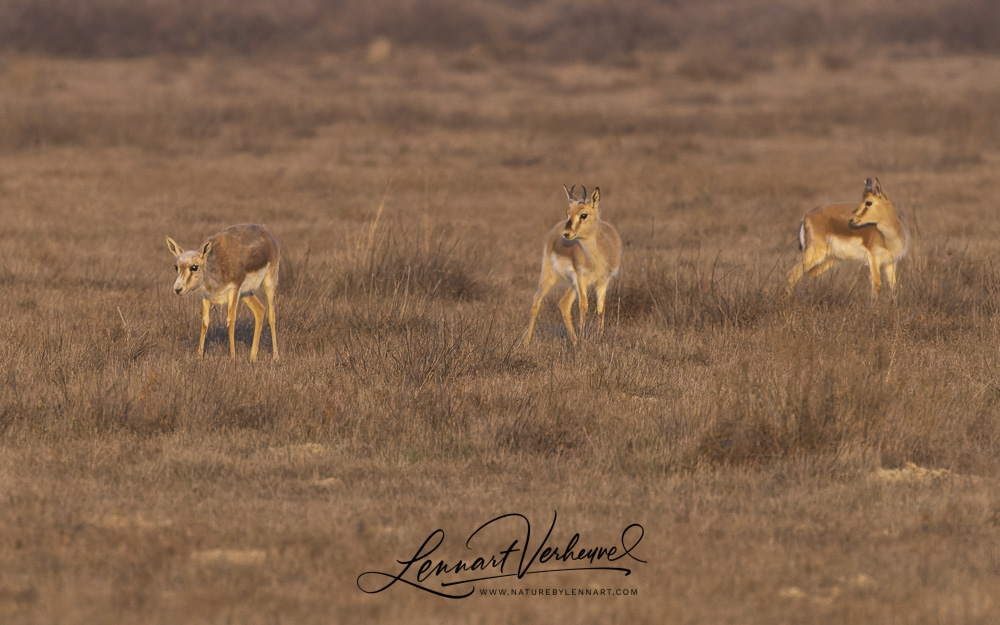
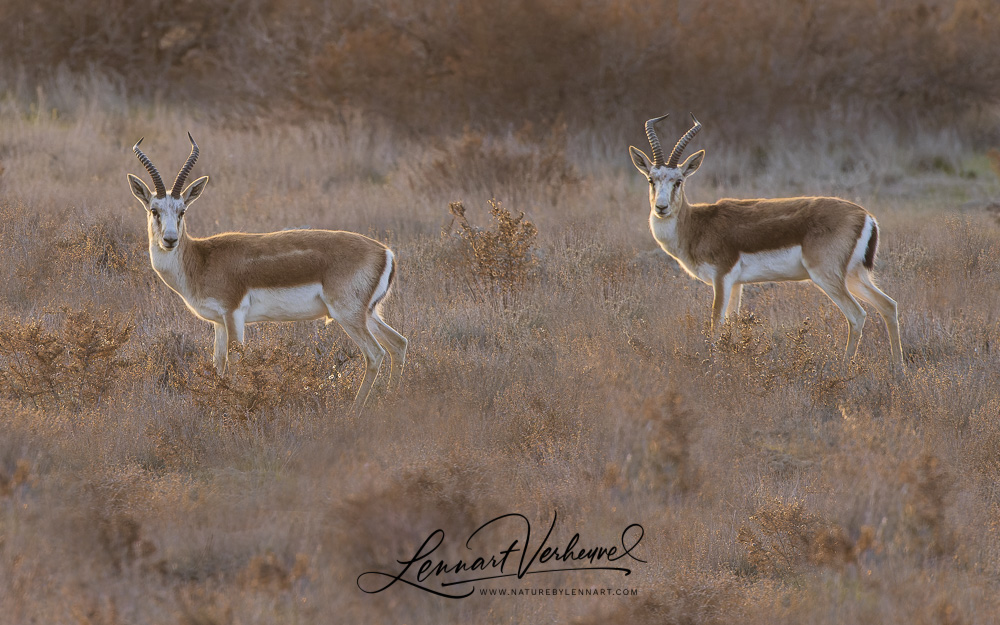
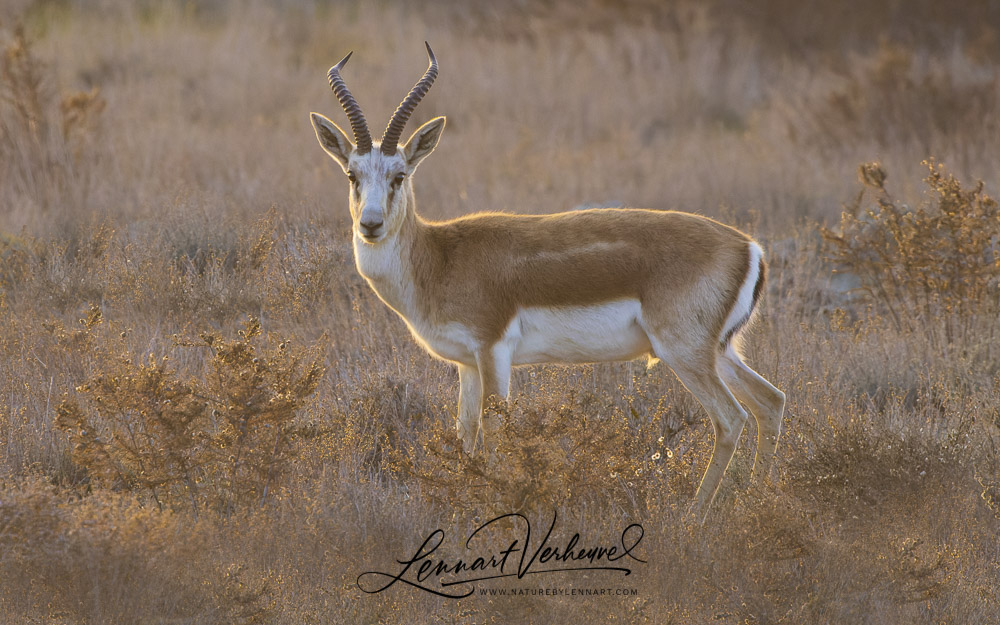
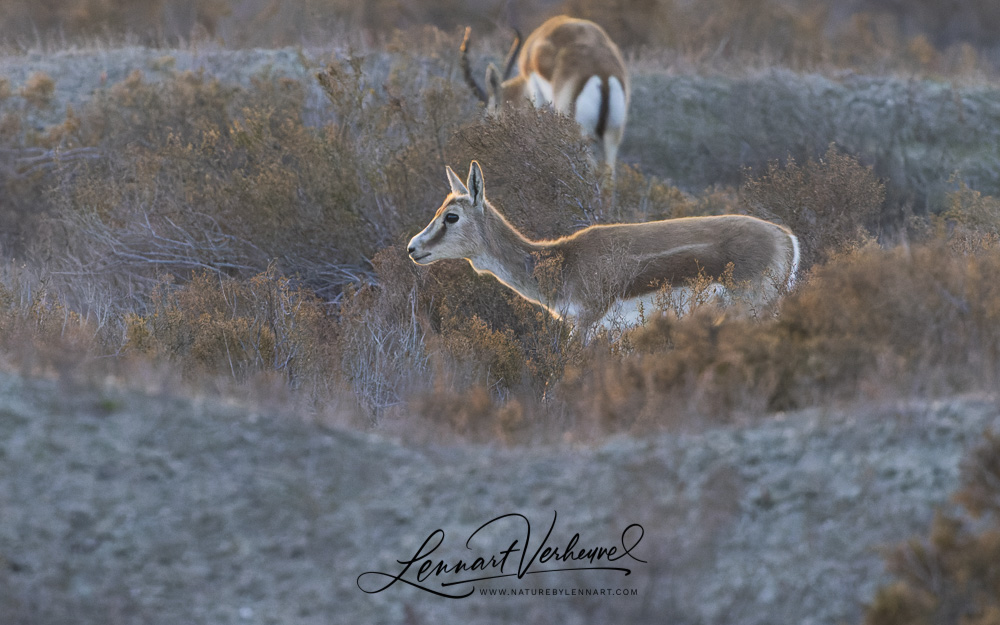
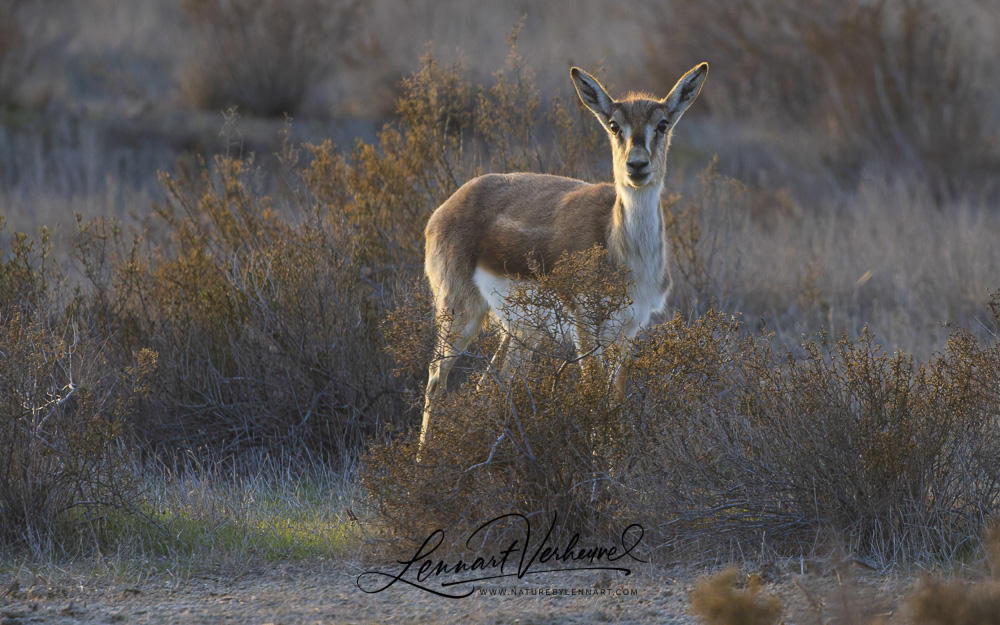
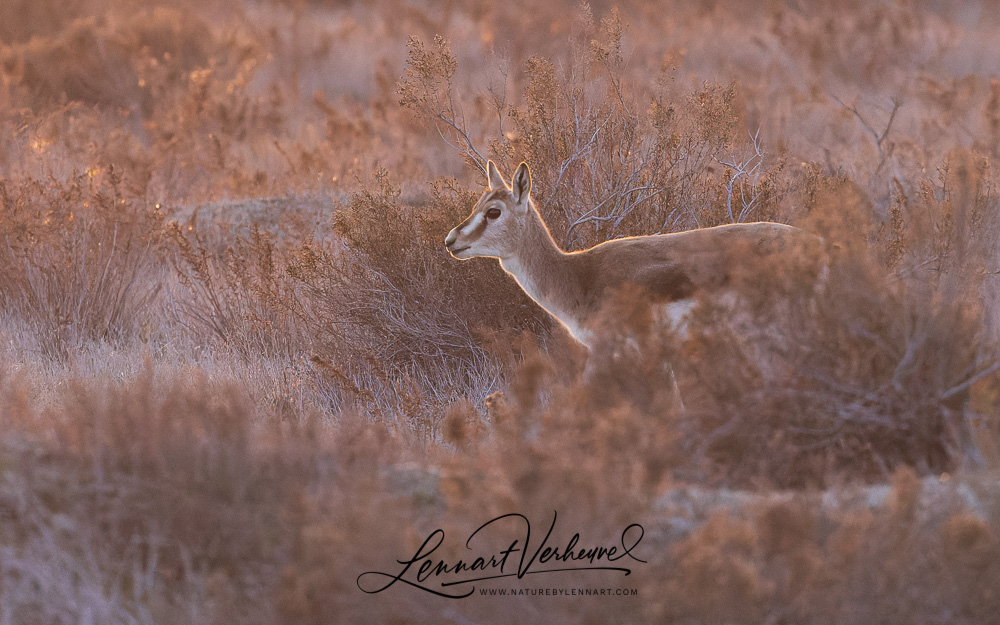
Goitered Gazelle
Another specialty are the wintering Little Bustards. It is possible here to see groups of insanely high numbers with groups consisting out of tens of thousands birds being be possible. We don’t reach that level, but we still count several thousand birds in one afternoon. This species is very rare in the Netherlands and it is therefore special to see so many animals together. Striking is the whistling sound that they make with their wings when they fly.
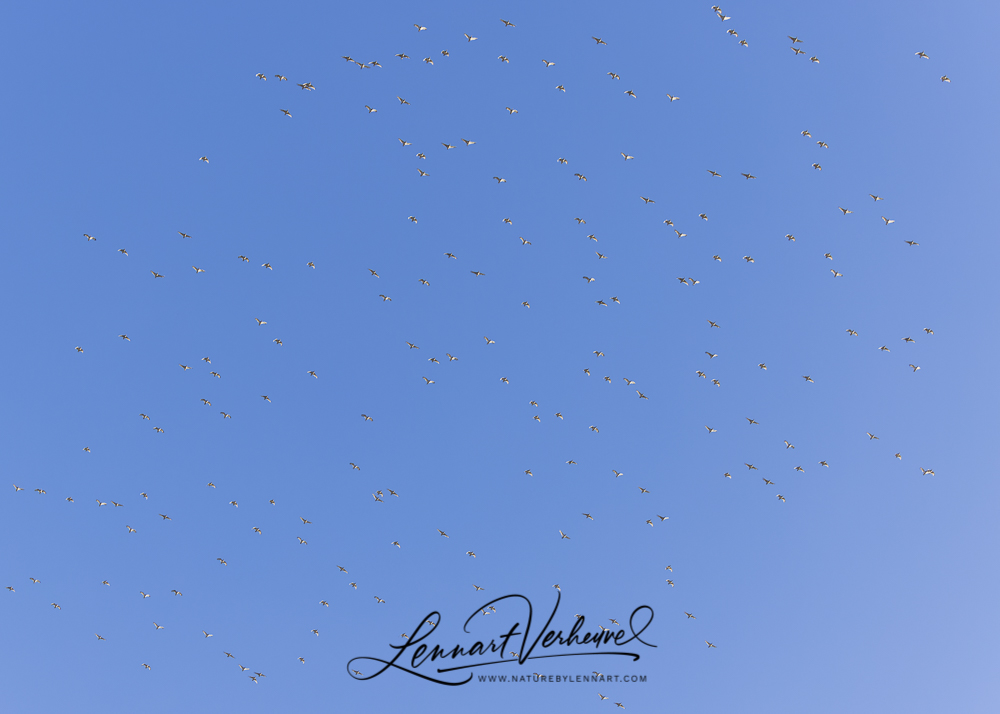
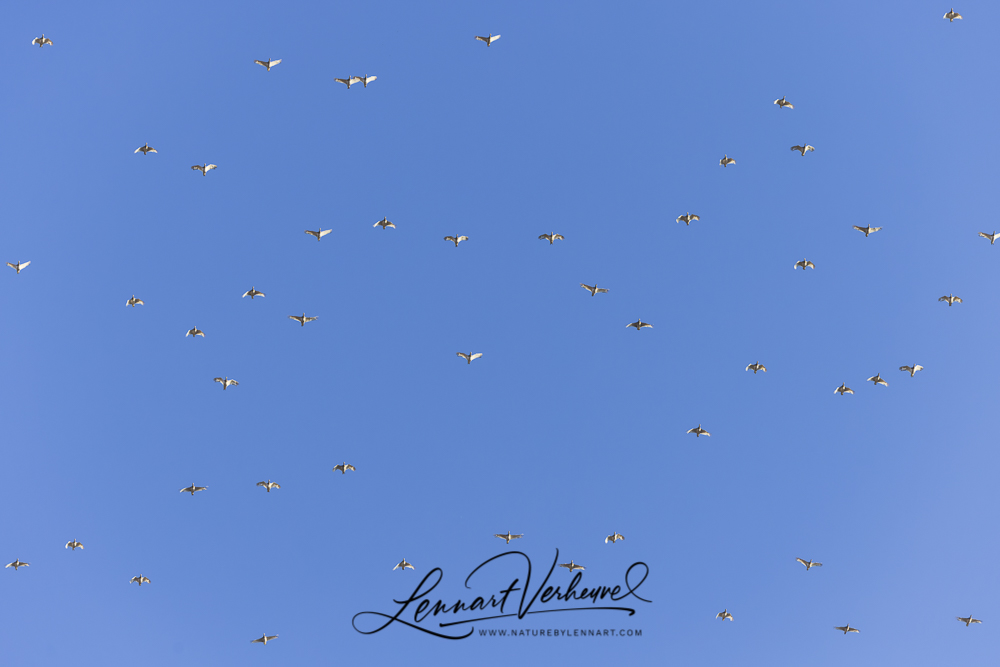
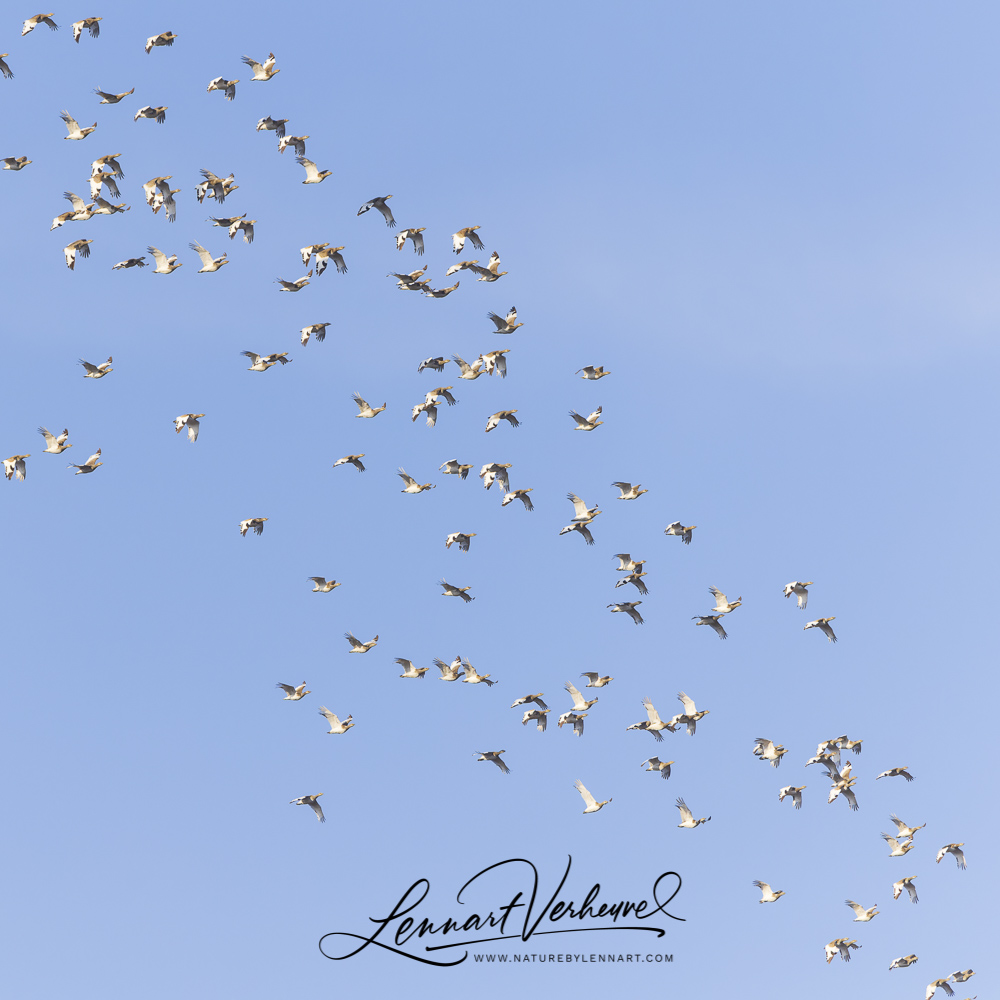
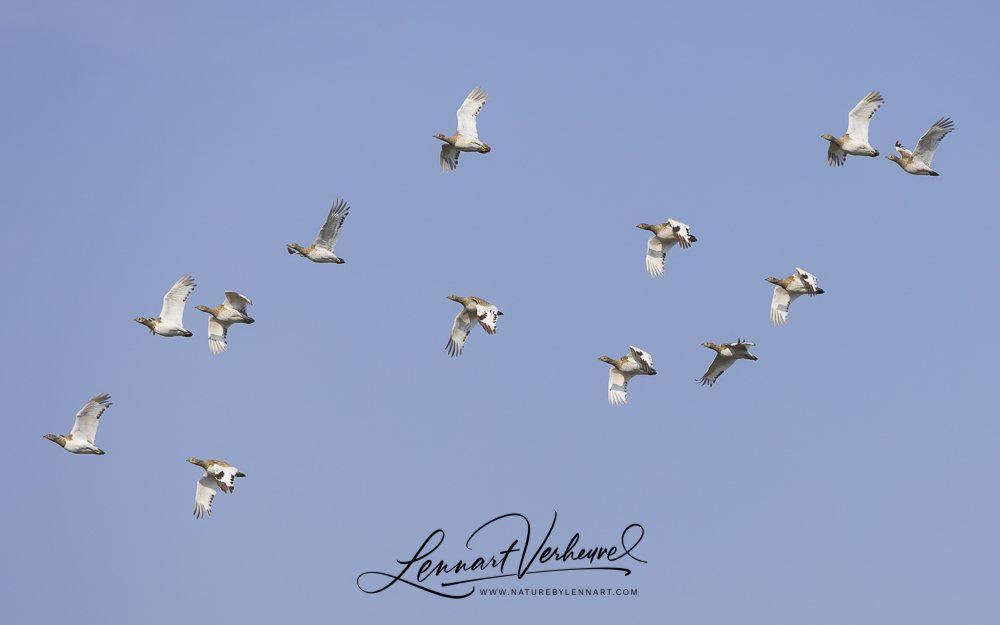
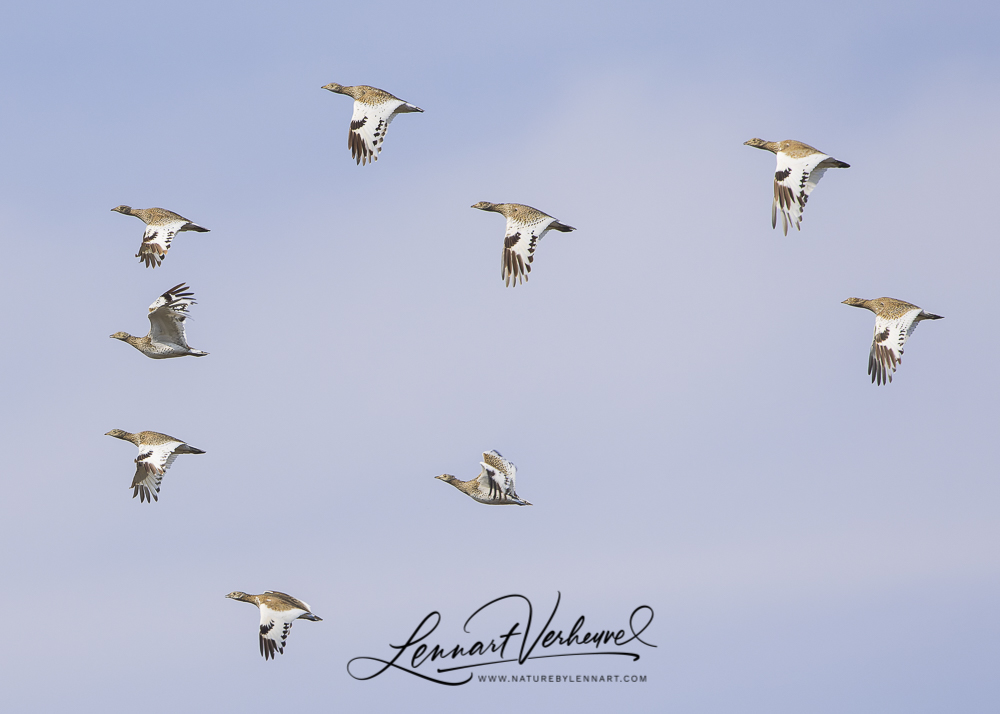
Little Bustard
When they have settled down again, it is striking how difficult they are to find.
Because besides all the birds I secretly also have a ‘mammal agenda’, I can’t wait to be able to view this special area at night. It appears possible to make arrangemente for this. On a Thursday evening we go for it! We’ve already heard the success story of another group of birders who were lucky enough to find a Marbled Polecat. This is a very attractive predator that I would like to see. In addition, Jungle Cat should be possible here. That would mean another new species for my world cat list. Enough reasons to spend an evening here!
We start around three o’clock in the afternoon. First we pick up the park ranger who sits in the front. We drive through the park with one car following the other. We suddenly stop because Lonnie thinks he sees something. He sits on the left and I on the right with Eric-Jan in the middle. Fortunately, I immediately see what he sees and with the naked eye I already think that this looks suspiciously good for a Marbled Polecat! I take my binoculars as fast as I can: THAT’S ONE! Fortunately, the polecat continues to look at us for a few seconds, so that I am able to take some record shots.
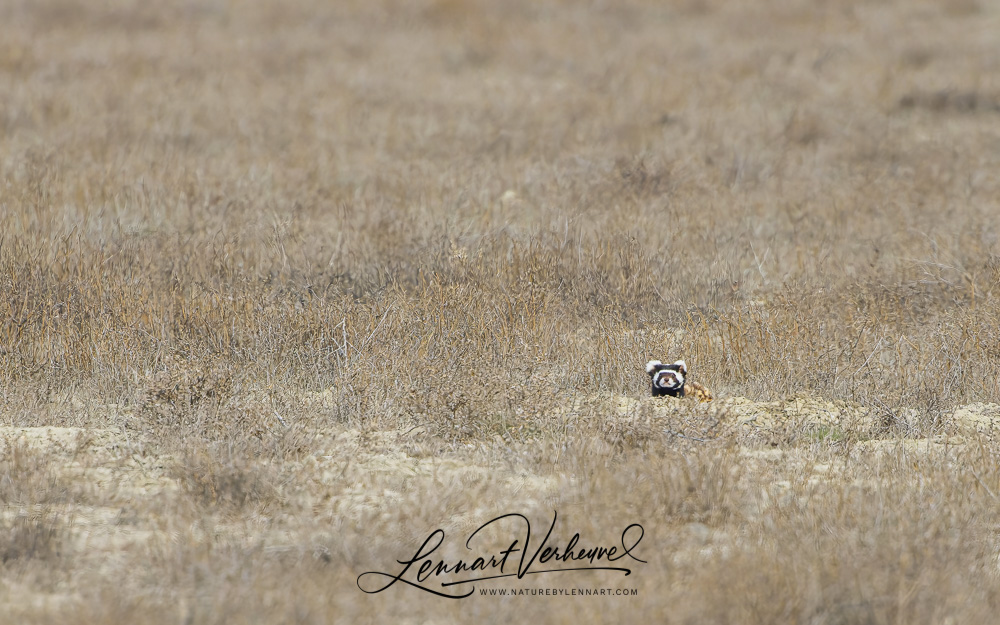
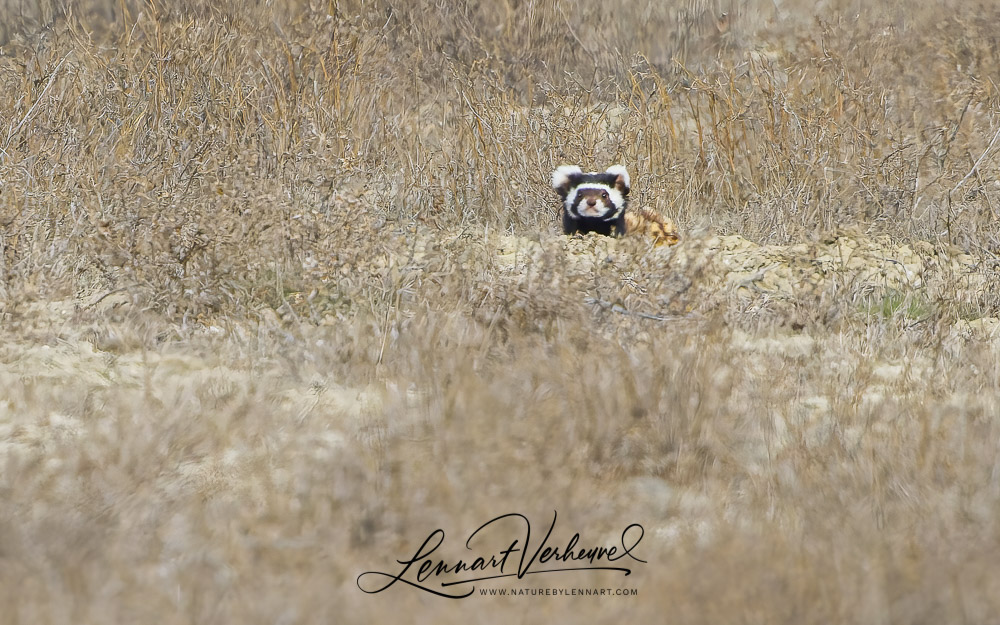
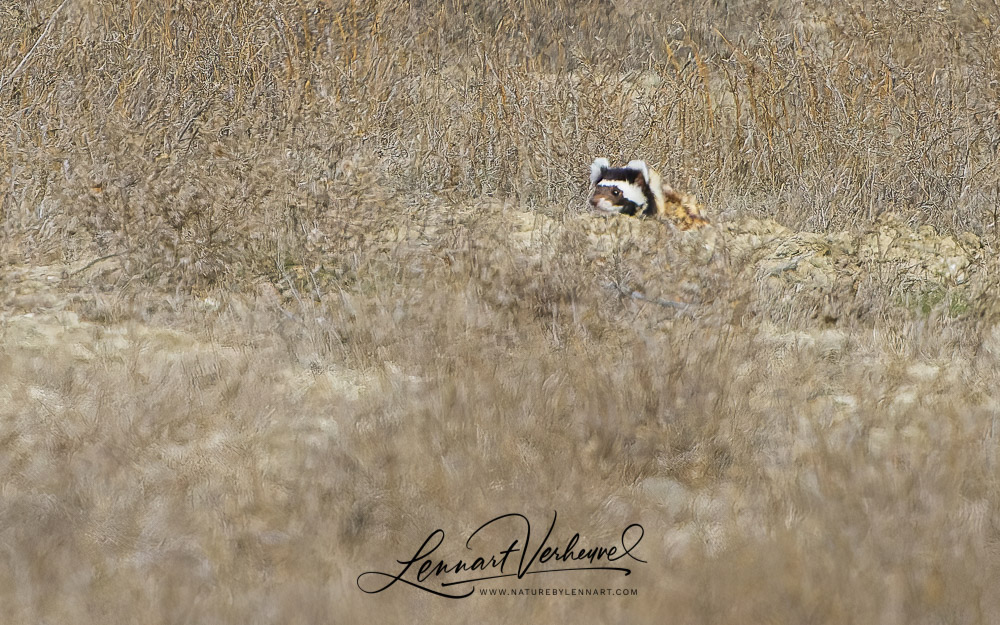
Marbled Polecat
I am very happy having seen this attractive predator. They are not easy to find!
Unfortunately, the other car with Alwin, Jaap and André-Willem had stopped for a moment to take a picture of a Goitered Gazelle and the polecat disappears just when they arrive. That is of course very disappointing for them. We drive on in search of more beautiful things.
As nightfall approaches, the Black Francolins allow themselves to be seen better. This bird that is shy during the day and nowhere to be seen, can sometimes even be admired on top of a building!
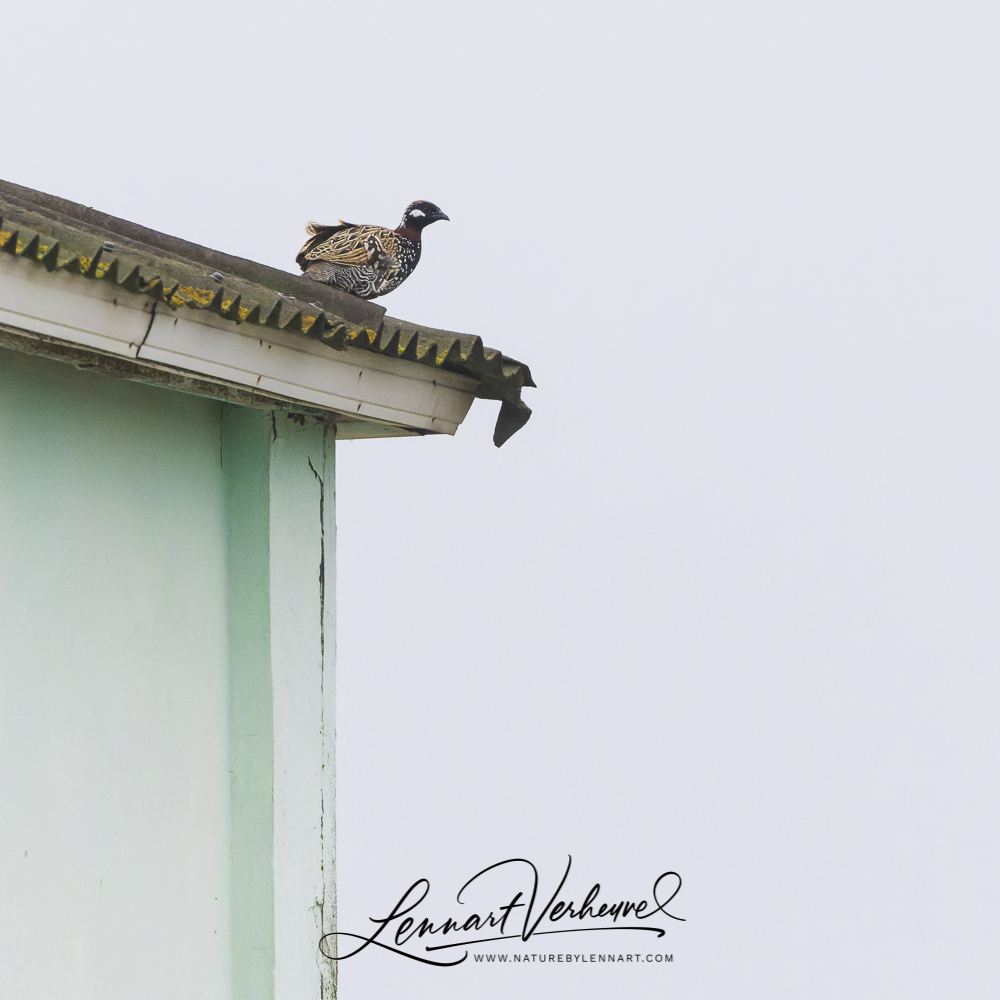
Black Francolin
We have our best encounter with a bird that walks right past our car in beautiful evening light. Black Francolin is definitely a really nice bird to watch!
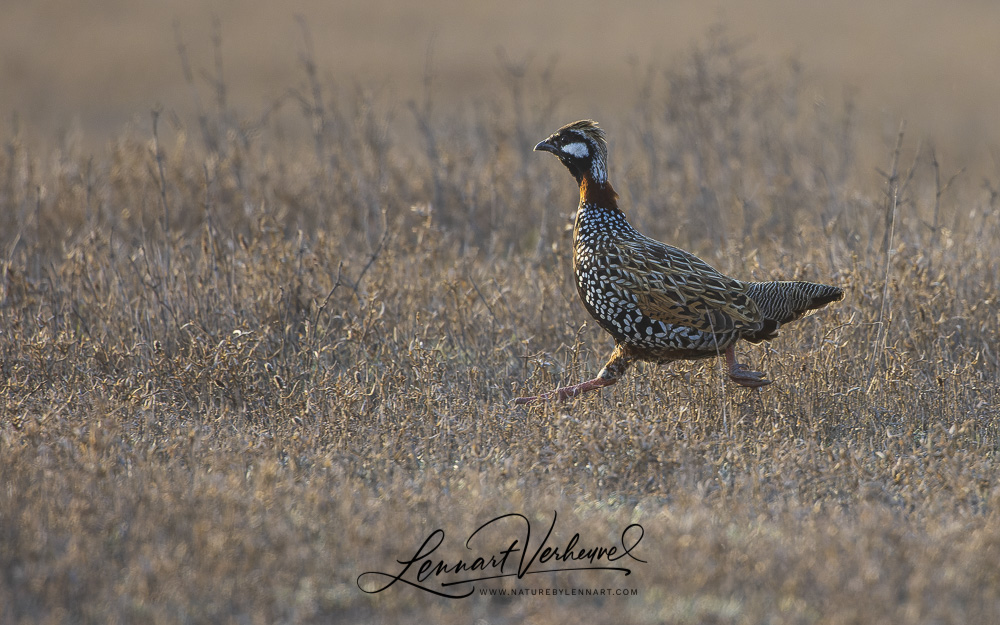
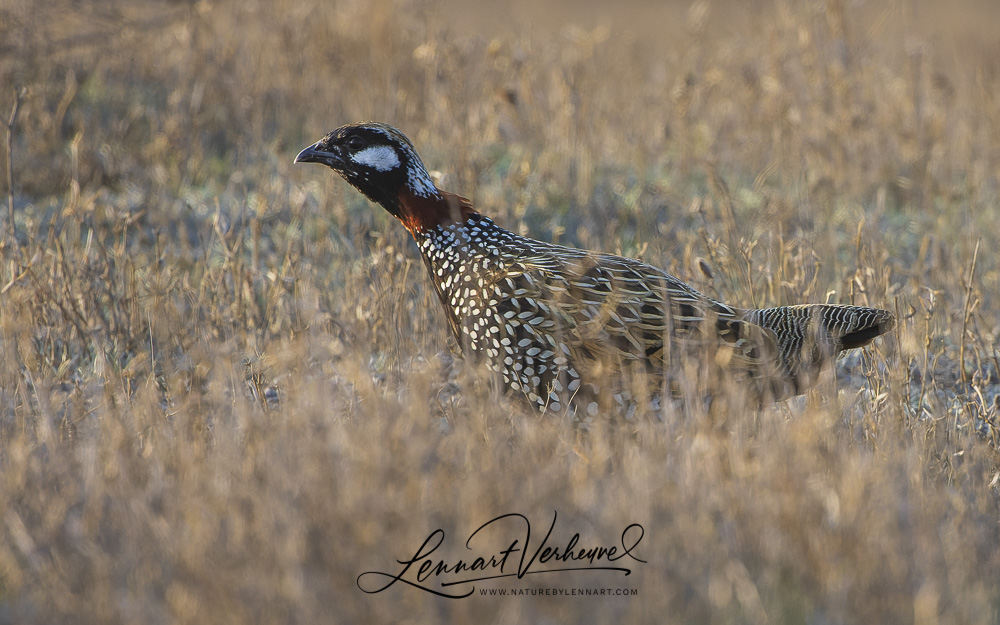
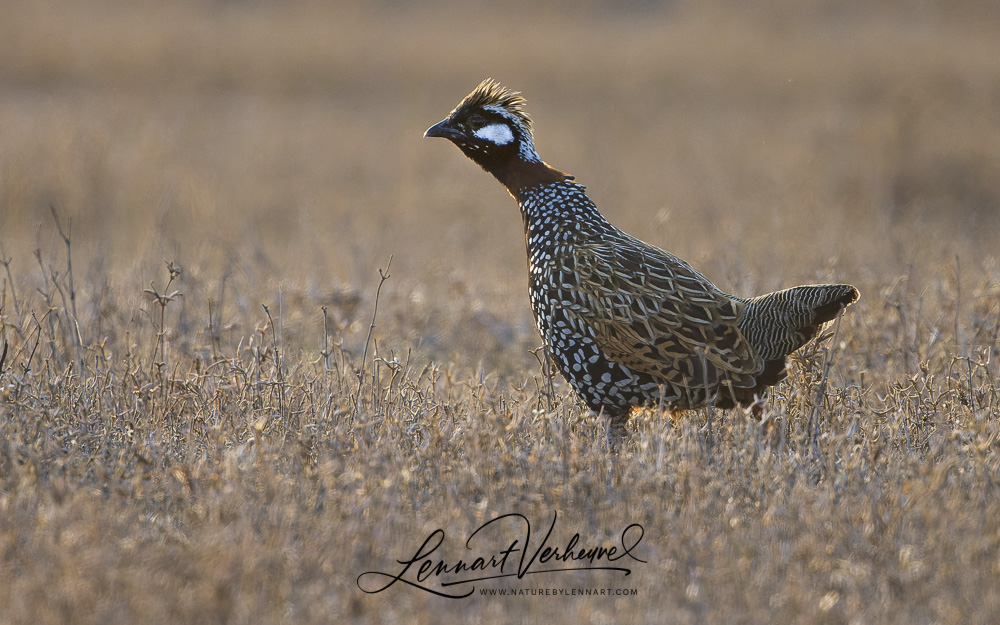
Black Francolin
When night falls we feast on the food we brought with us that was left over from a lavish lunch. We drink it with tea served by the resident of the little house by the lake. This is the same lake where we hope to find Omid. It is possible to sit on the roof of the house and we have a nice lookout over the lake.
When it’s dark, we go out. Unfortunately we are not allowed to shine with a flashlight, but luckily I do have a thermal imager. With that we pick up the Williams’s Jerboas that jump around everywhere. Jerboas are very nice rodents that I have also seen in Western Sahara. They hop around like kangaroos and have a long, tufted tail. Williams’s has quite long ears which gives a funny look.
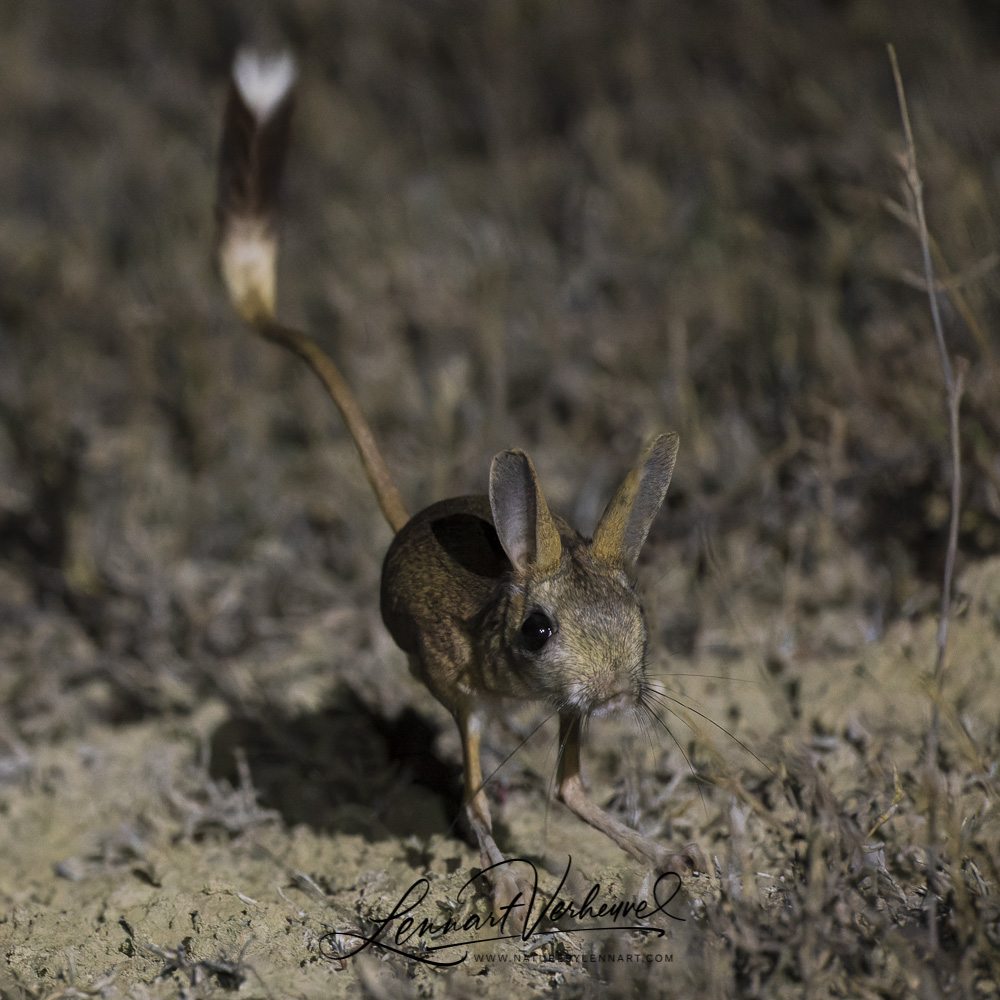
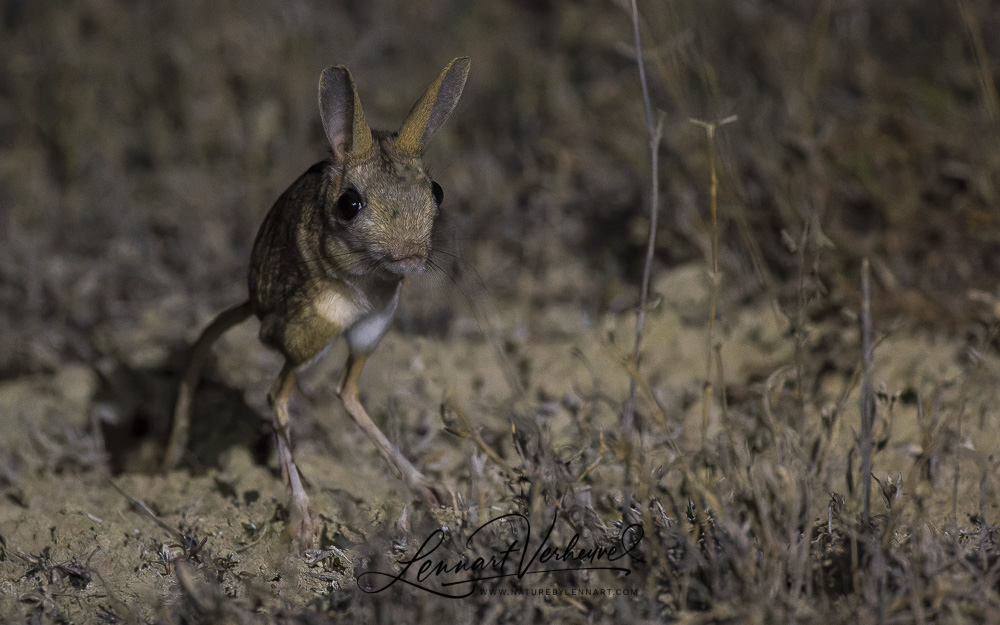
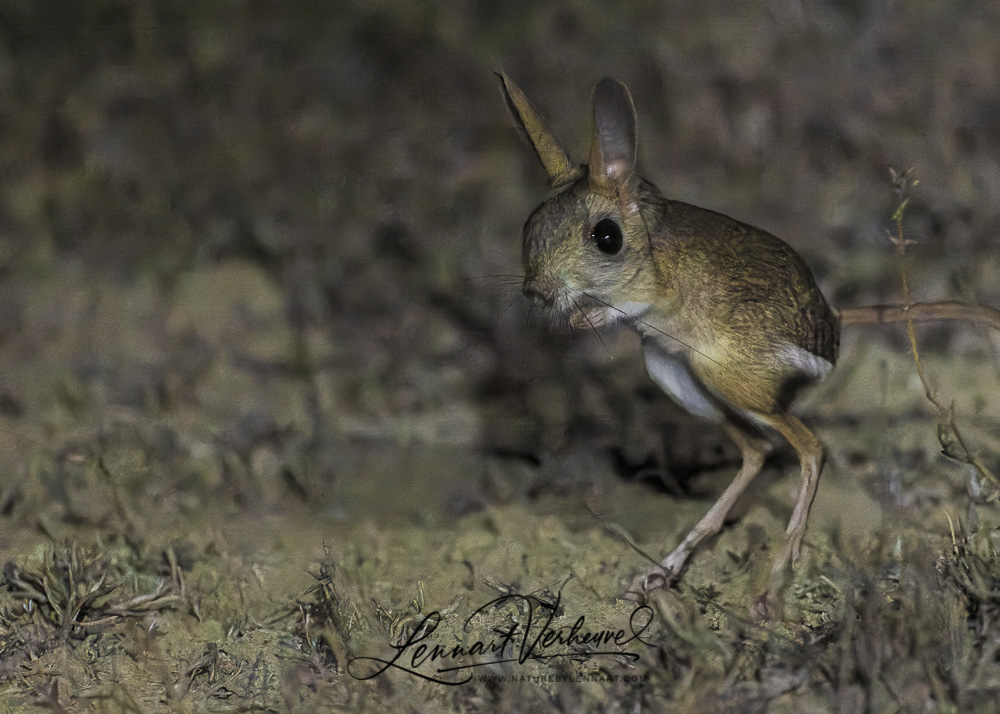
Williams’s Jerboa
We drive quite a round over the plain, but larger game does not appear yet. We do see a fox, but we had already seen it during the day.
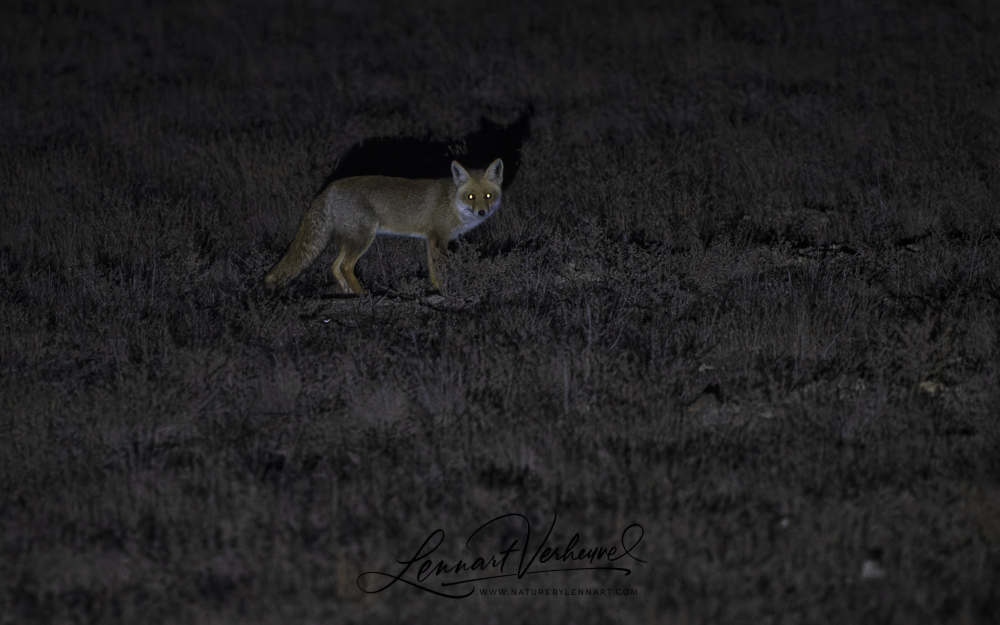
Red Fox ssp caucasia
When we get close to the reed again, I suddenly see something exciting in the reed. That looks like a cat! I quickly try to find the animal with the flashlight, but unfortunately it disappears into the reeds. I have flashbacks to evenings last winter when I tried to find a Wild Cat in Limburg in the Netherlands. They all walked away before I could get a good look at them. I turn off the flashlight, hoping the cat will return. And he actually does! I can see that he is sitting in the reeds. I turn the flashlight on again and now the cat just keeps looking at us! I take a lot of pictures so that we should be able to safely ID it. The cat is in no hurry though and we have time to put the animal in the view of the telescope! We are all very happy to be able to watch this cat so well. Because indeed: this is a Jungle Cat! I am very happy to see cat number 17. We did not go out in Shirvan at night for nothing!
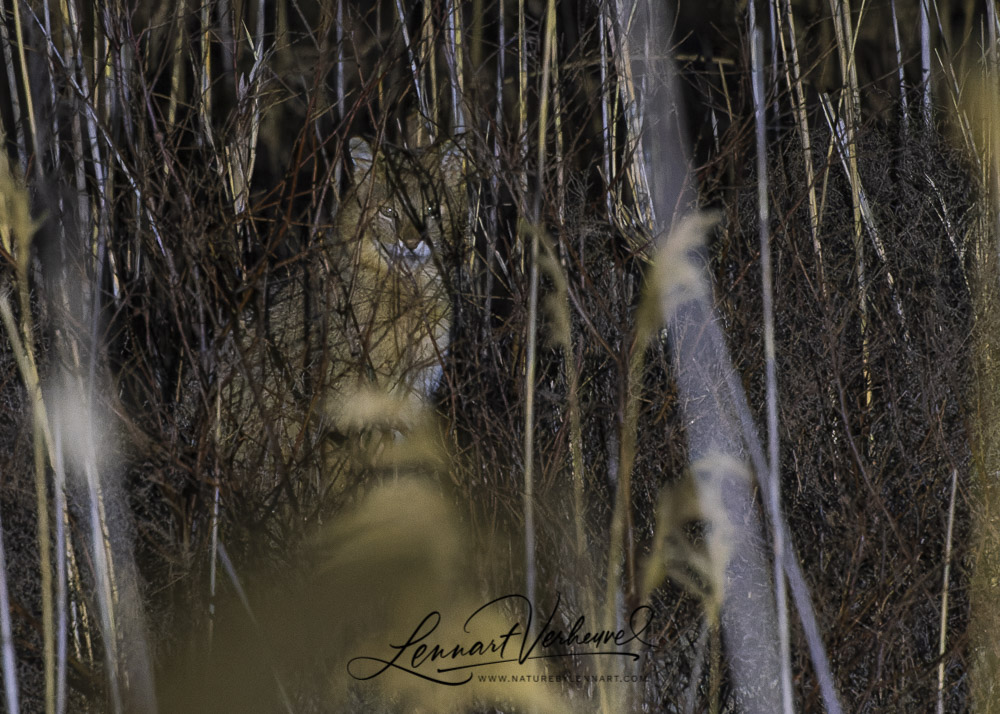

Jungle Cat
But while other animals did not disappoint, that wasn’t the case for our main target: Omid. That crane just refused to take off from Iran! Of course our trip was planned on the days when we expected Omid to arrive based on his previous departures, but the bird just didn’t care about that and broke all previous departure records. We used the time left to see some nice other birds in the Caucasus.
We want to spend our last day in the desert near Gobustan National Park where other bird watchers have found a Mongolian Finch. That is a very special bird for this place and still new for most of us. However, in our search we do not see any more species than we have already seen. Of course, the Finch’s Wheatear remains a very beautiful species.
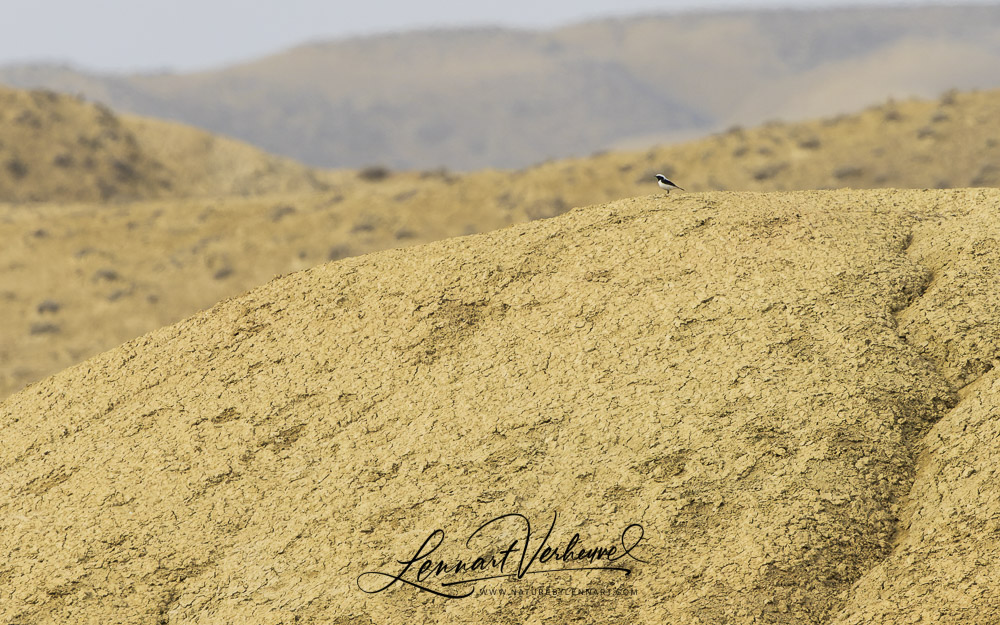
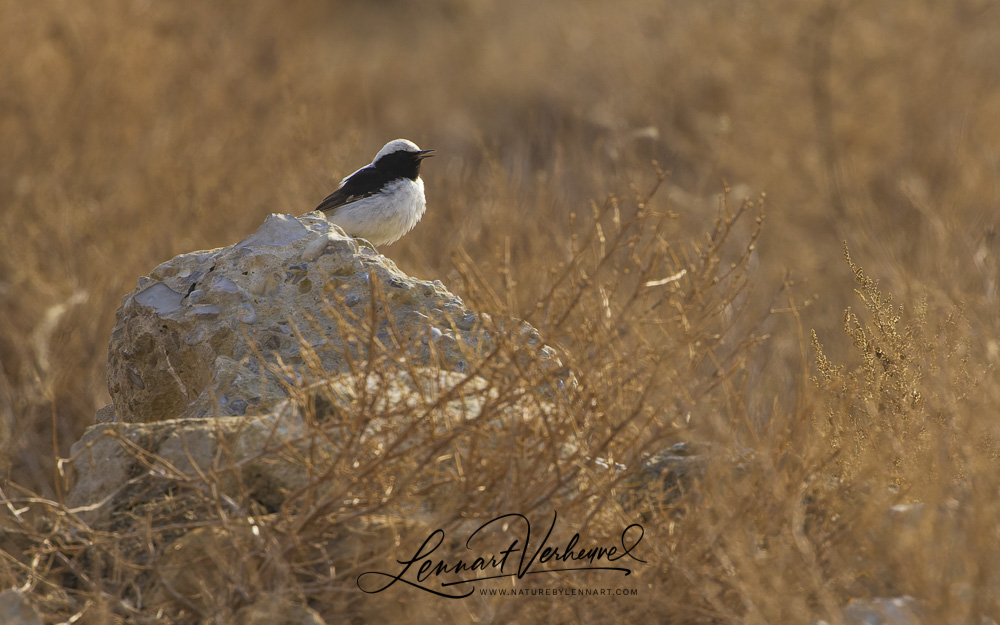
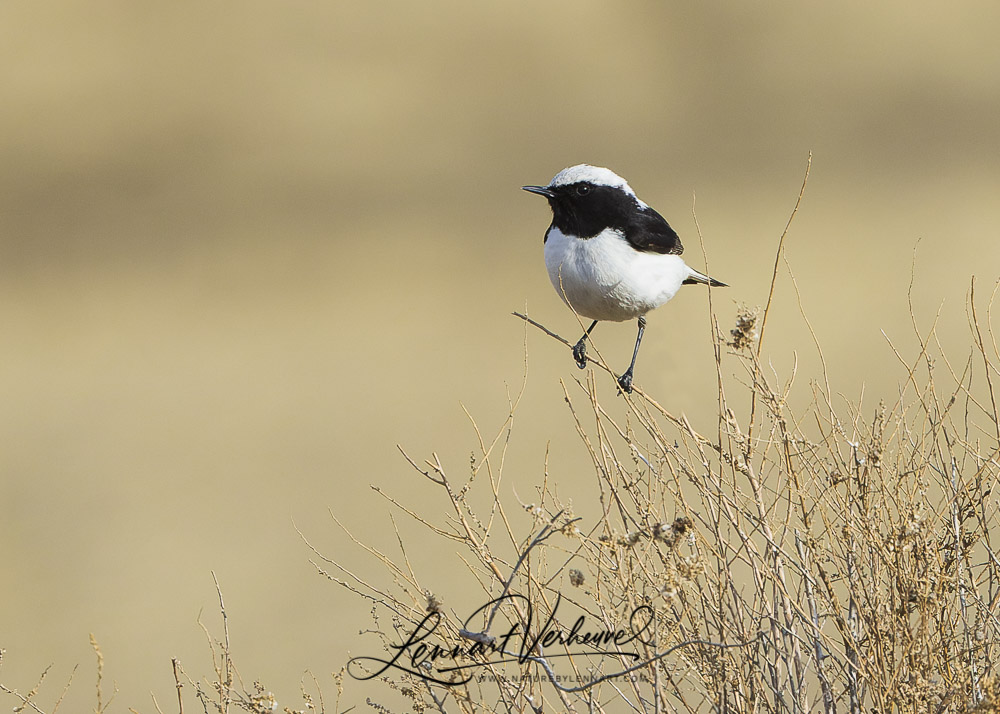
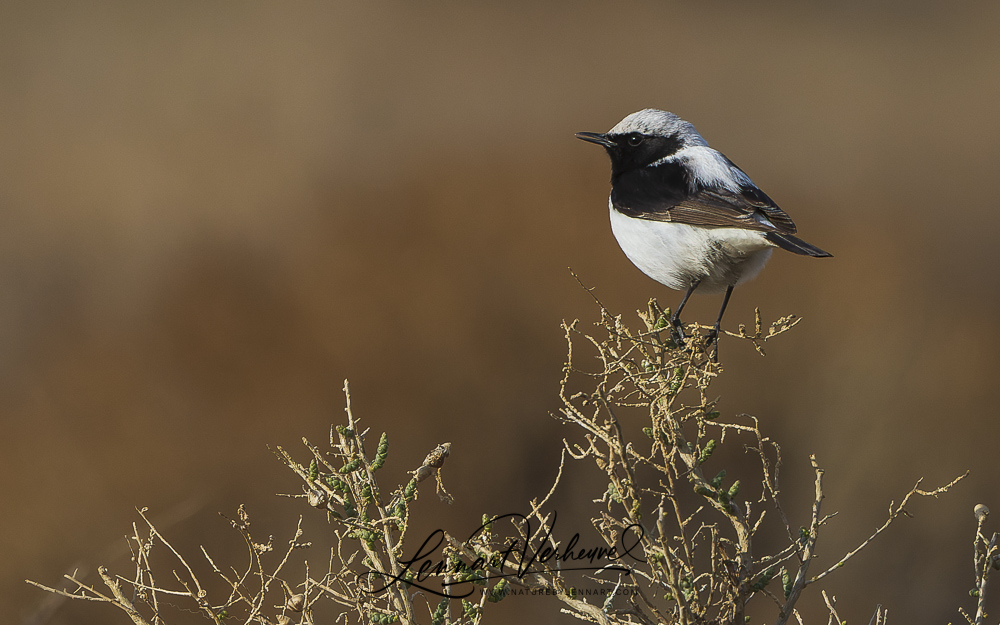
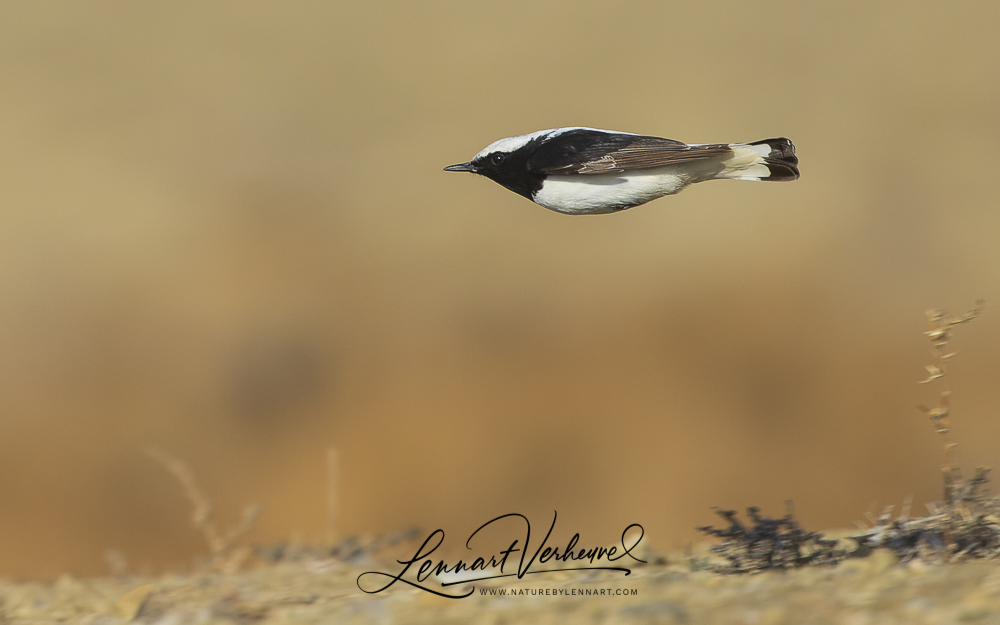
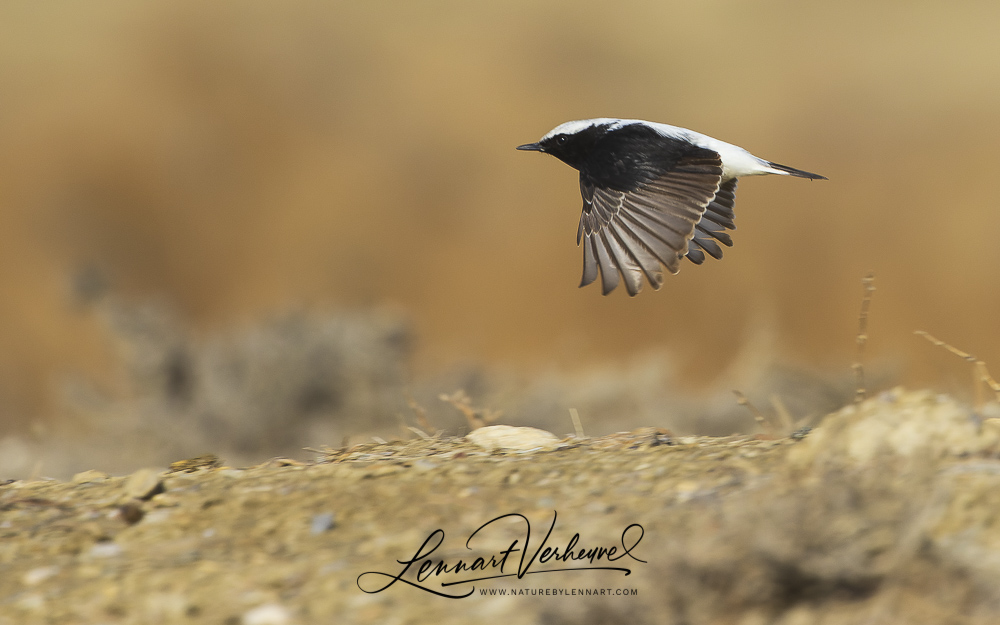
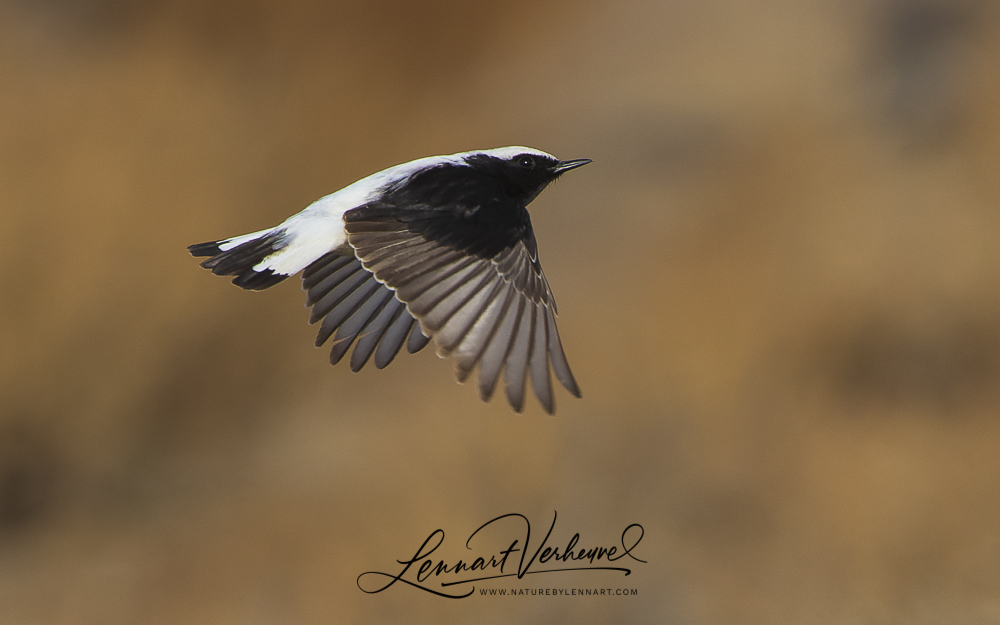
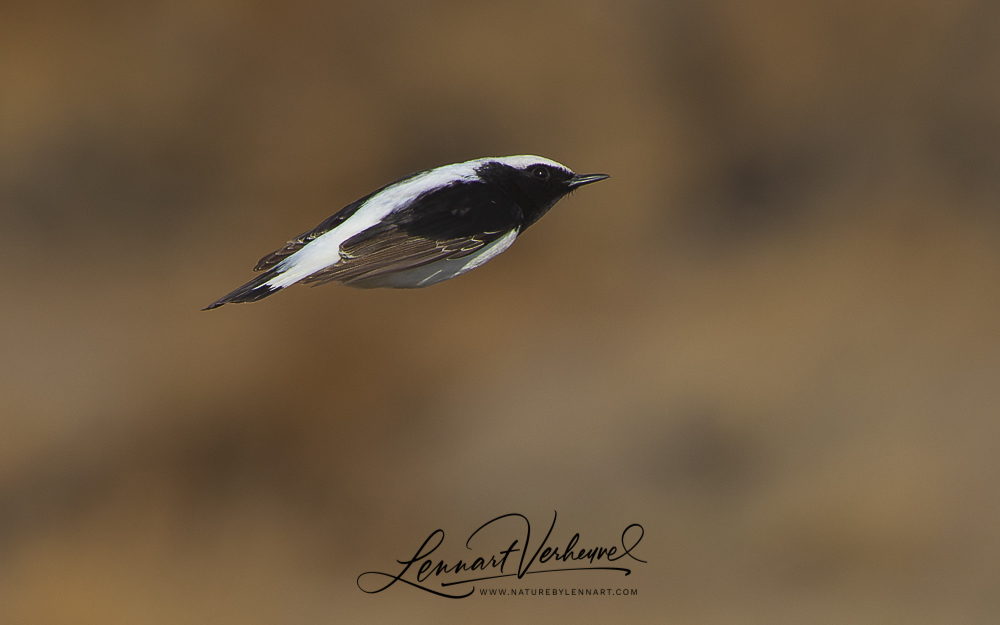
Finch’s Wheatear
I also really appreciate the Isabelline Wheatears.
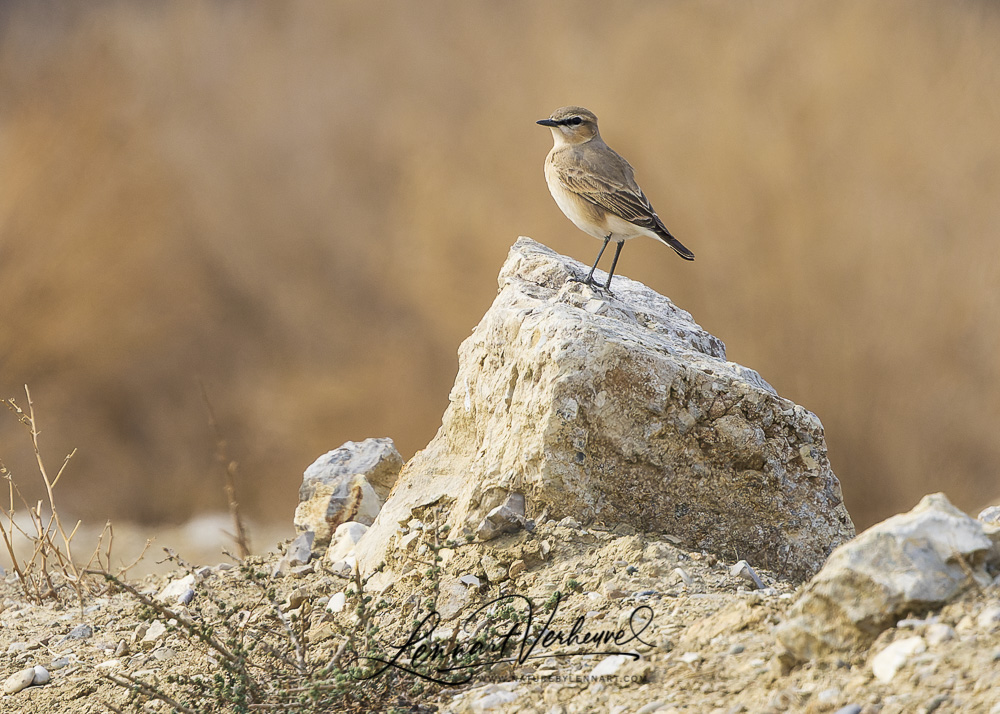
Isabelline Wheatear
We also see Western Rock Nuthatch again. This species was also a dream species for me that I have wanted to see for a long time.
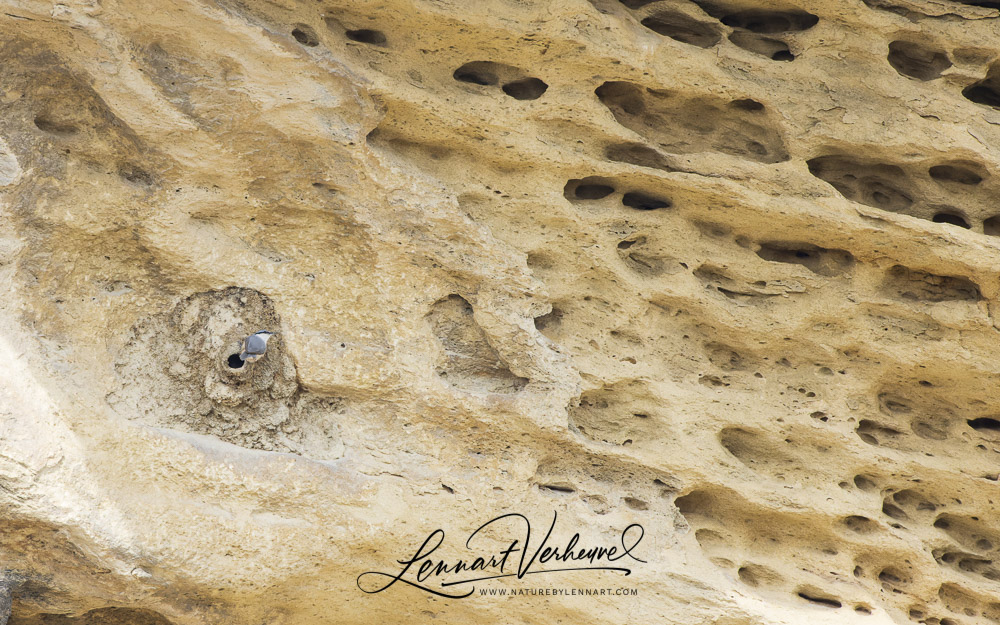
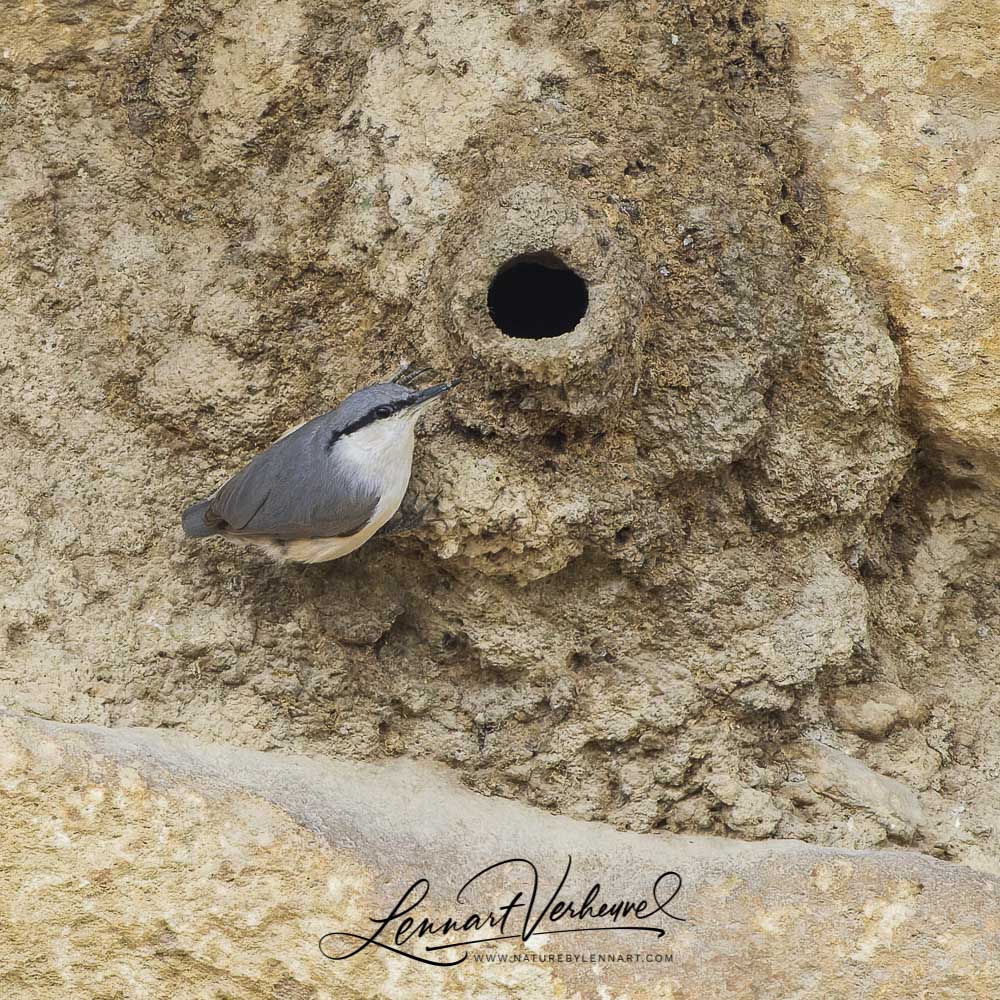
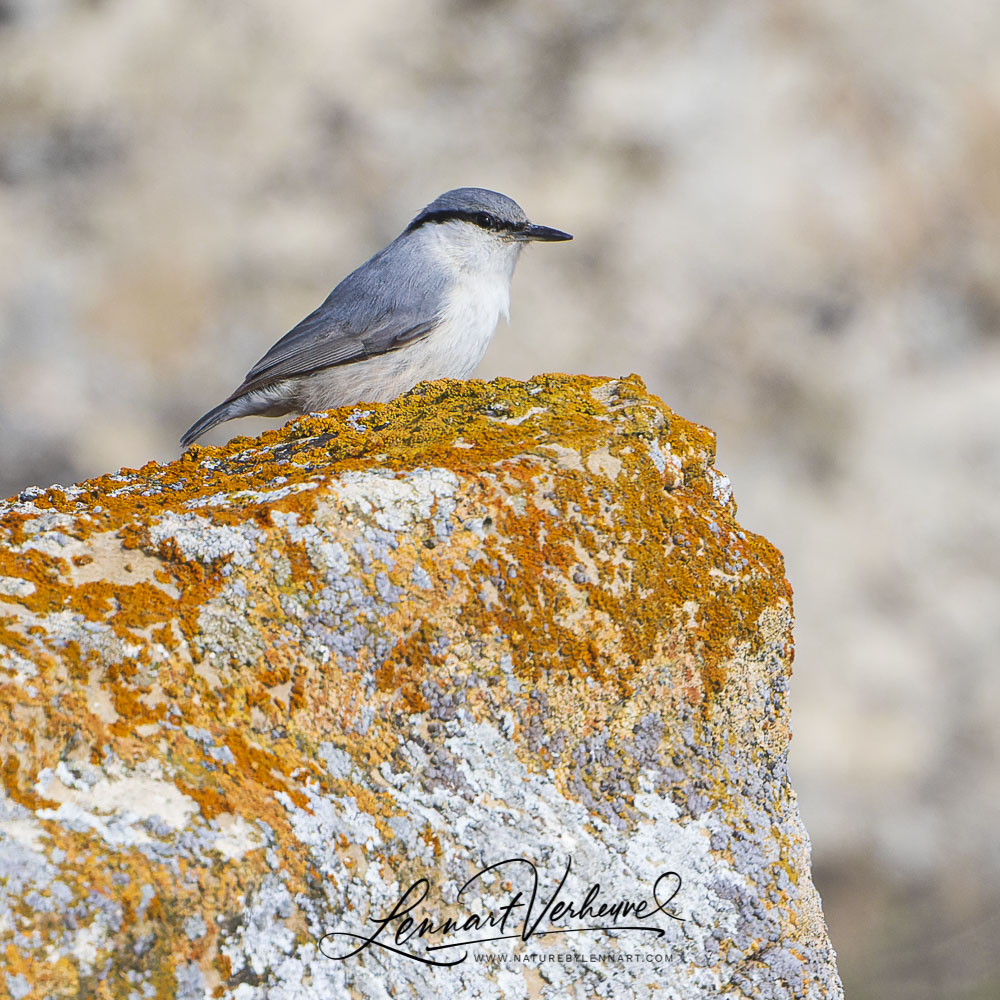
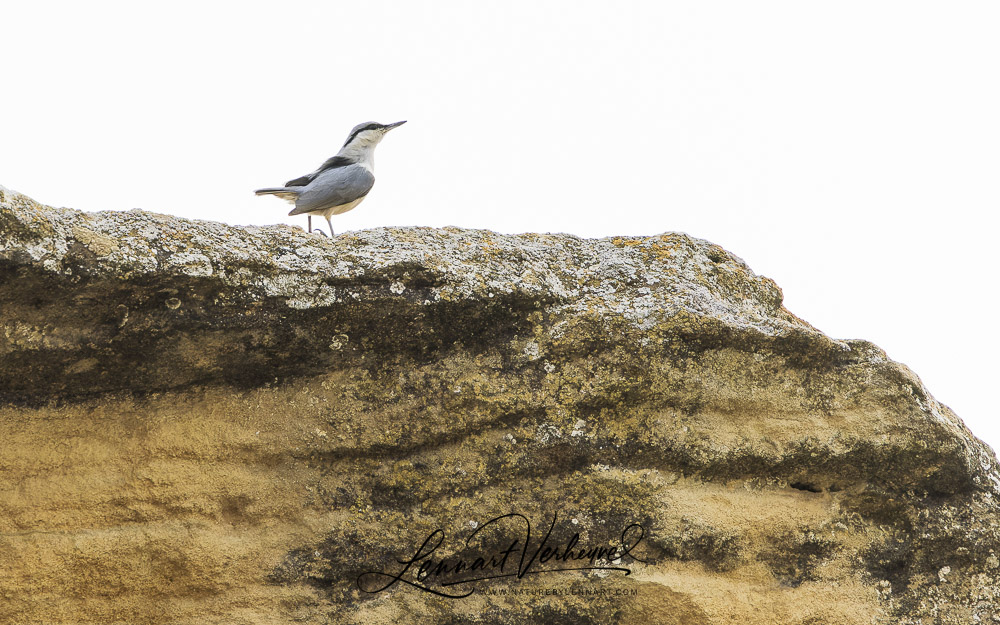
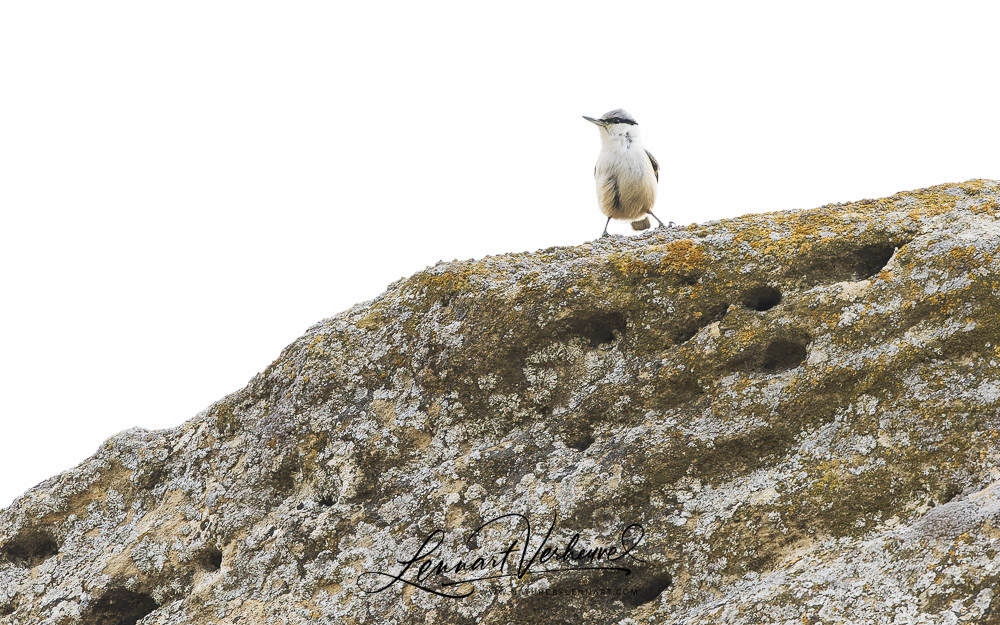
Western Rock Nuthatch
We also see the Saker Falcon that we have seen here before. That is still an impressive falcon!
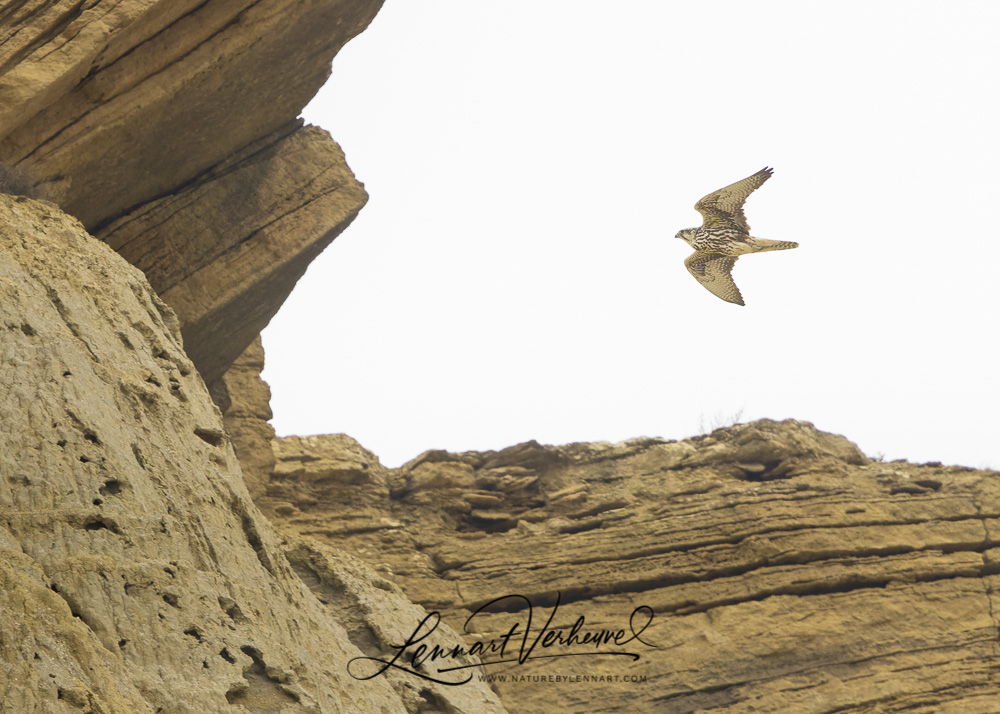
Saker Falcon
The Crested Larks are everywhere as always and allow for good photo’s.
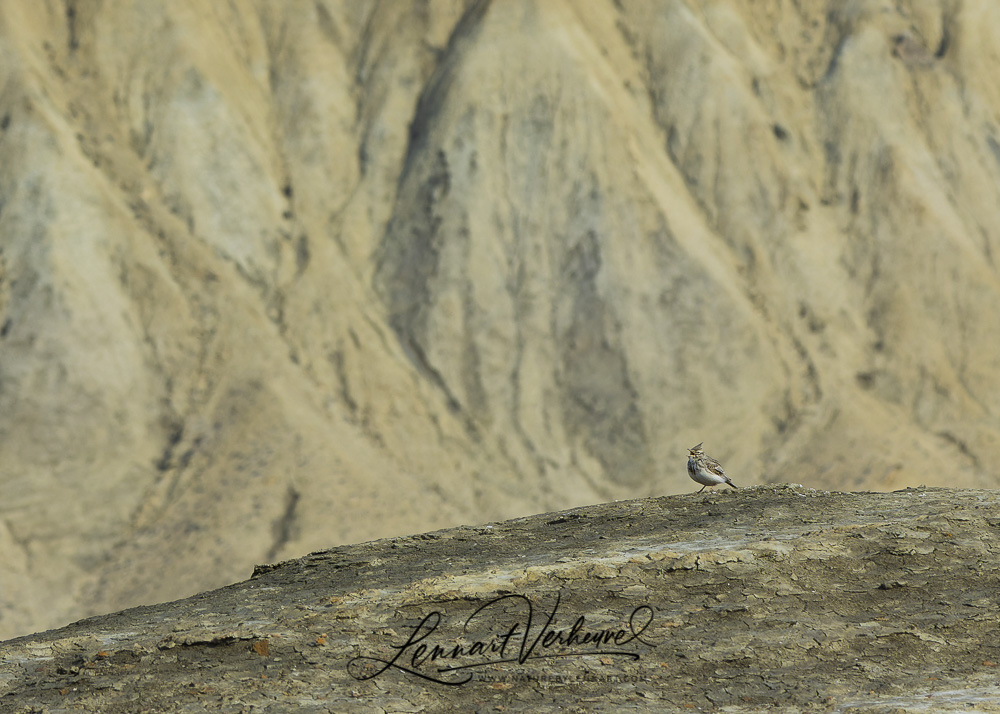
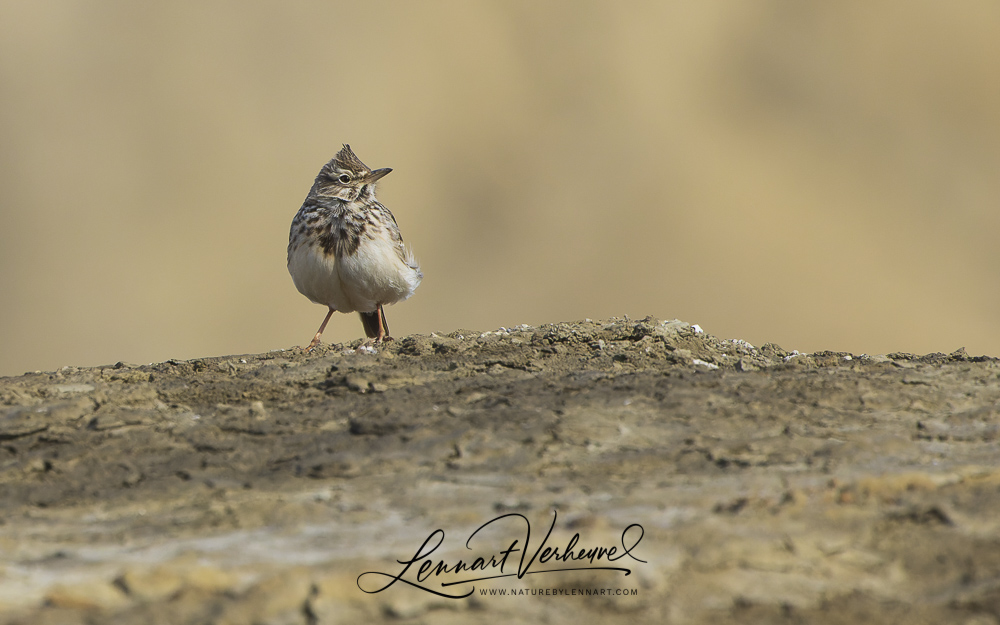
However, our search is abruptly cut short when a message arrives from Iran: Omid has taken off! We drive back to Shirvan at full speed. Would we see it at last? While we are driving through the park at a slightly higher speed than normal, I suddenly see a large pale lapwing next to the car. A Sociable Lapwing!! That is one of my biggest wish species to see and seeing it so unexpectedly is great! It even turns out that there are three of them within a larger group of Northern Lapwings.
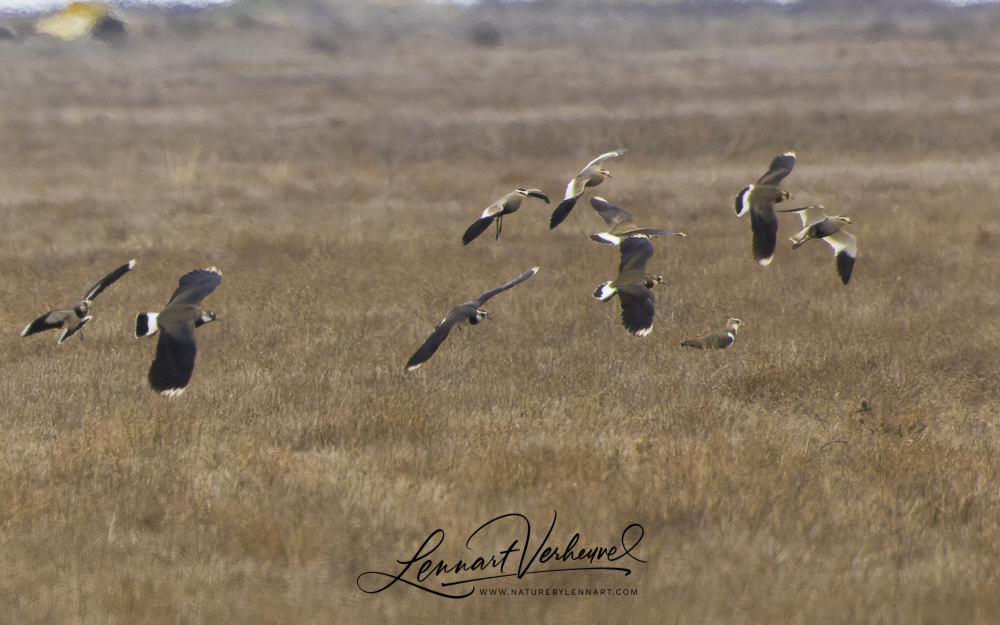
Sociable Lapwings and Northern Lapwings
Initially we drive on to the lake, but we return later to have a closer look at these birds.
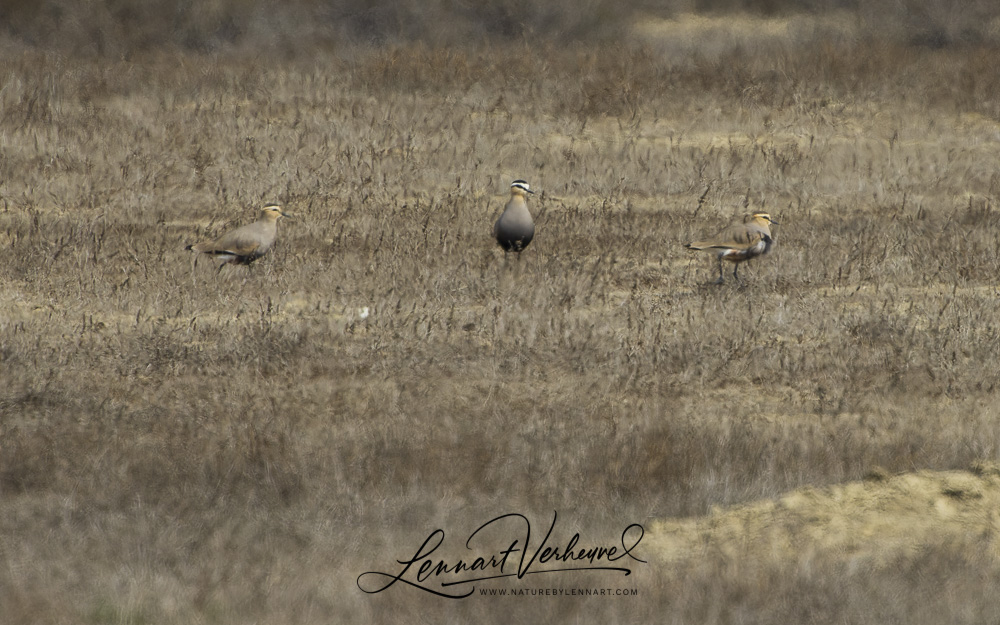
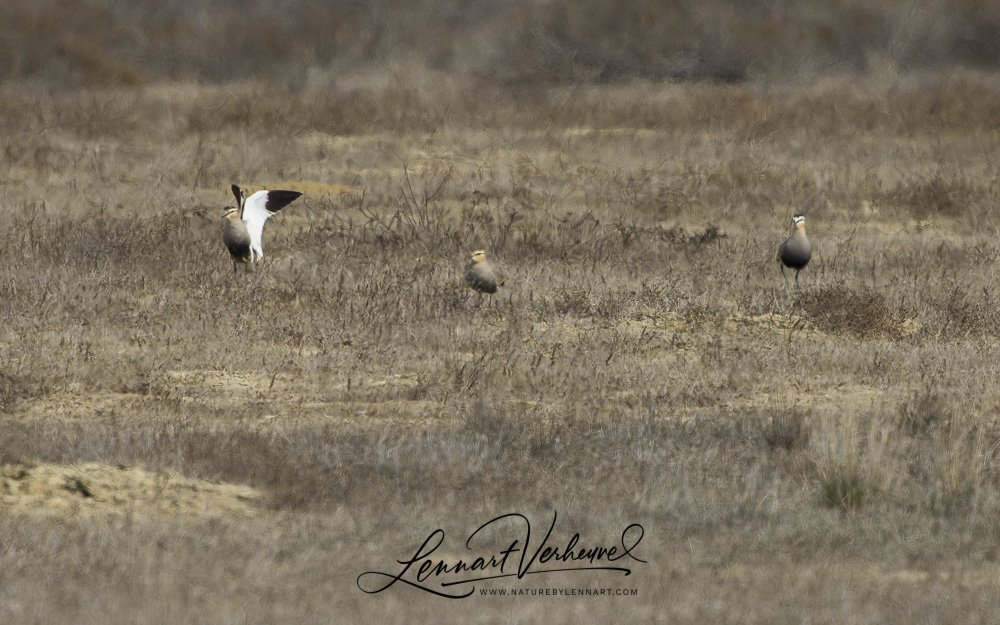
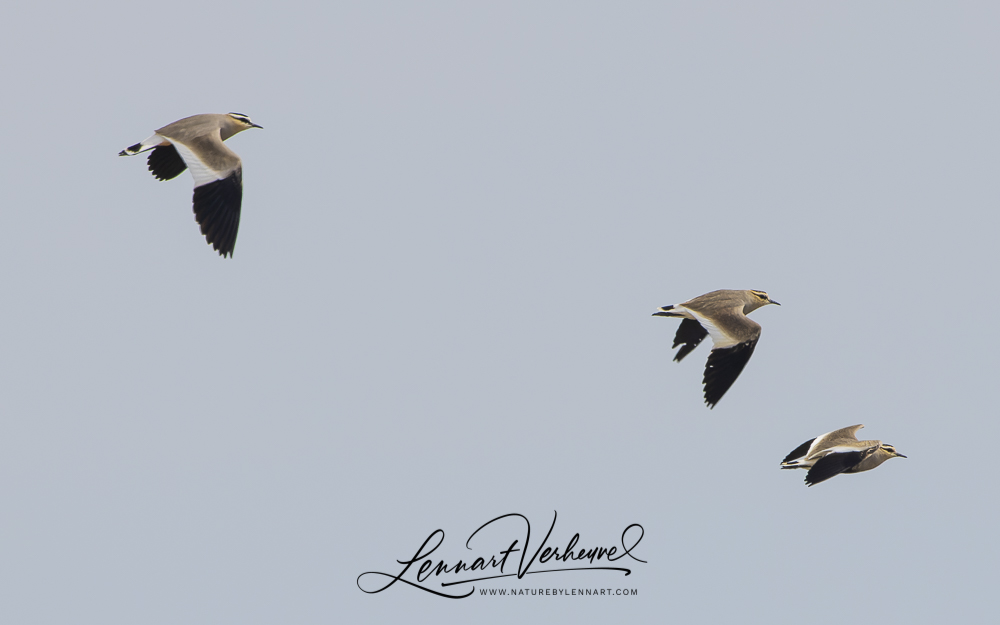
Sociable Lapwings
This would also turn out to be the last new bird species of the trip. The hope that Omid would make the flight to Azerbaijan in record time turns out to be in vain. That Wednesday, most of us also leave Azerbaijan. It still didn’t regret the trip with the beautiful birds and mammals that we saw. Hopefully Omid will stay alive for a few more years so that there will be new opportunities for all WP birders!
A trip report for the mammal section can be read here.